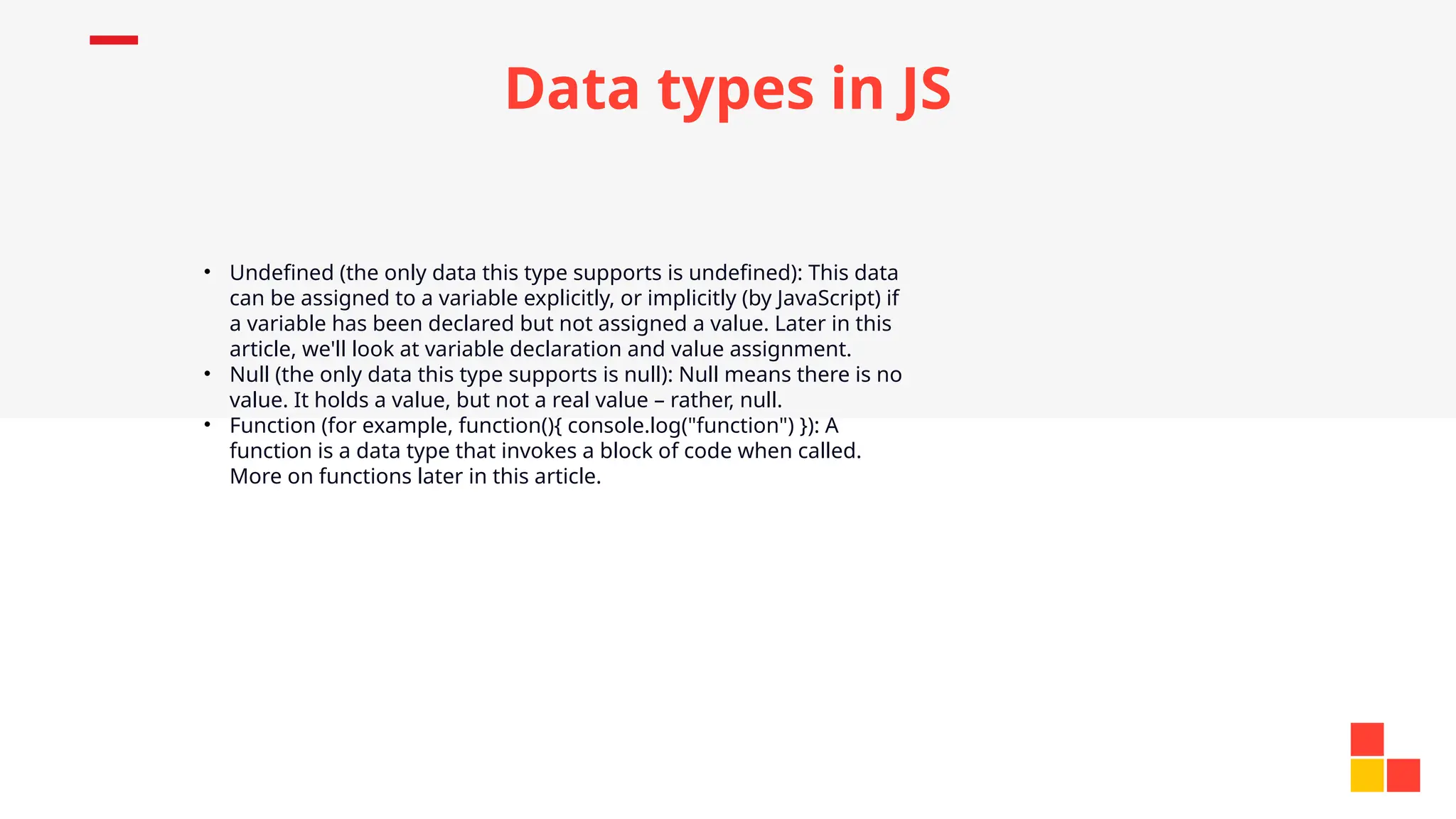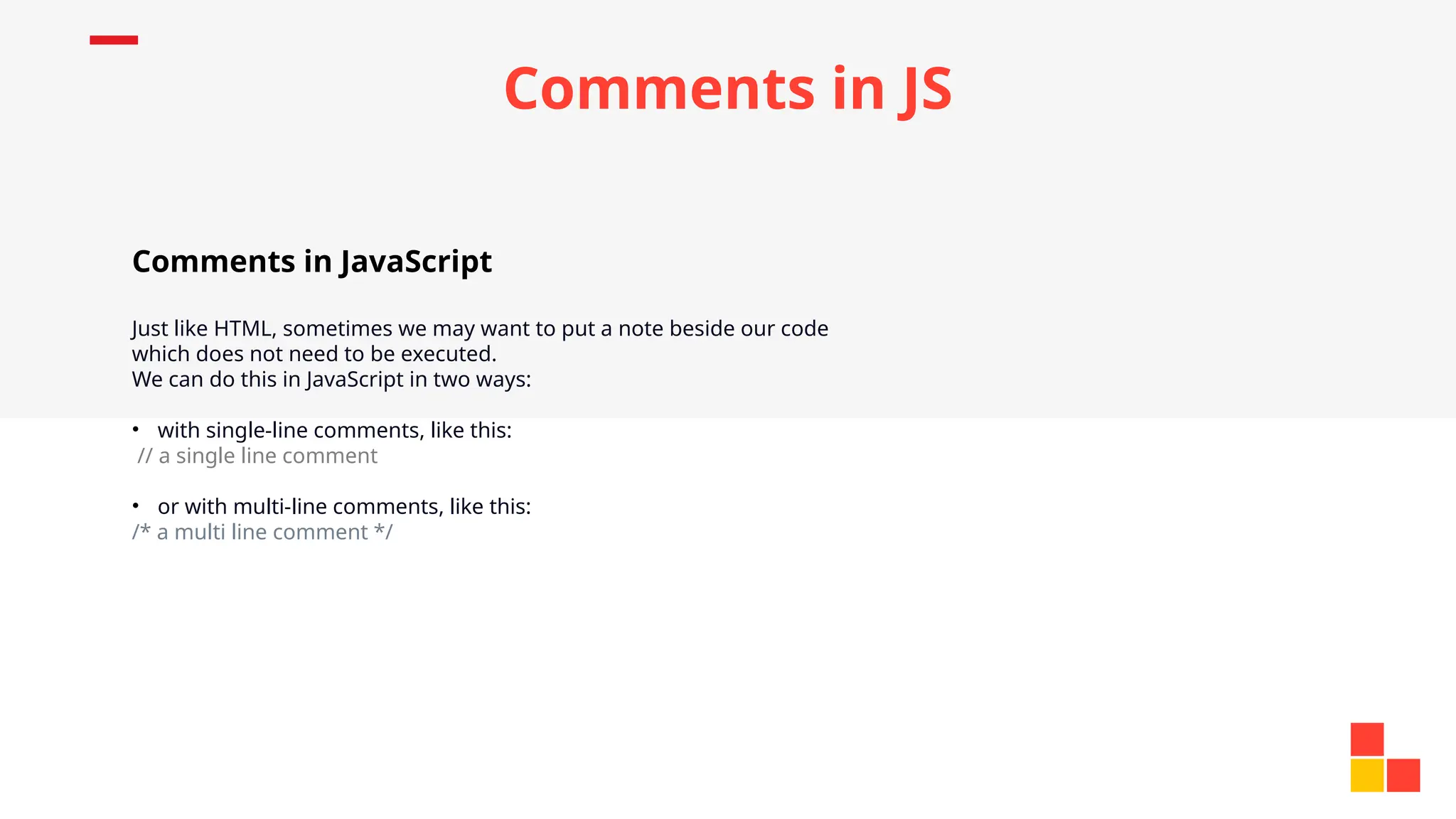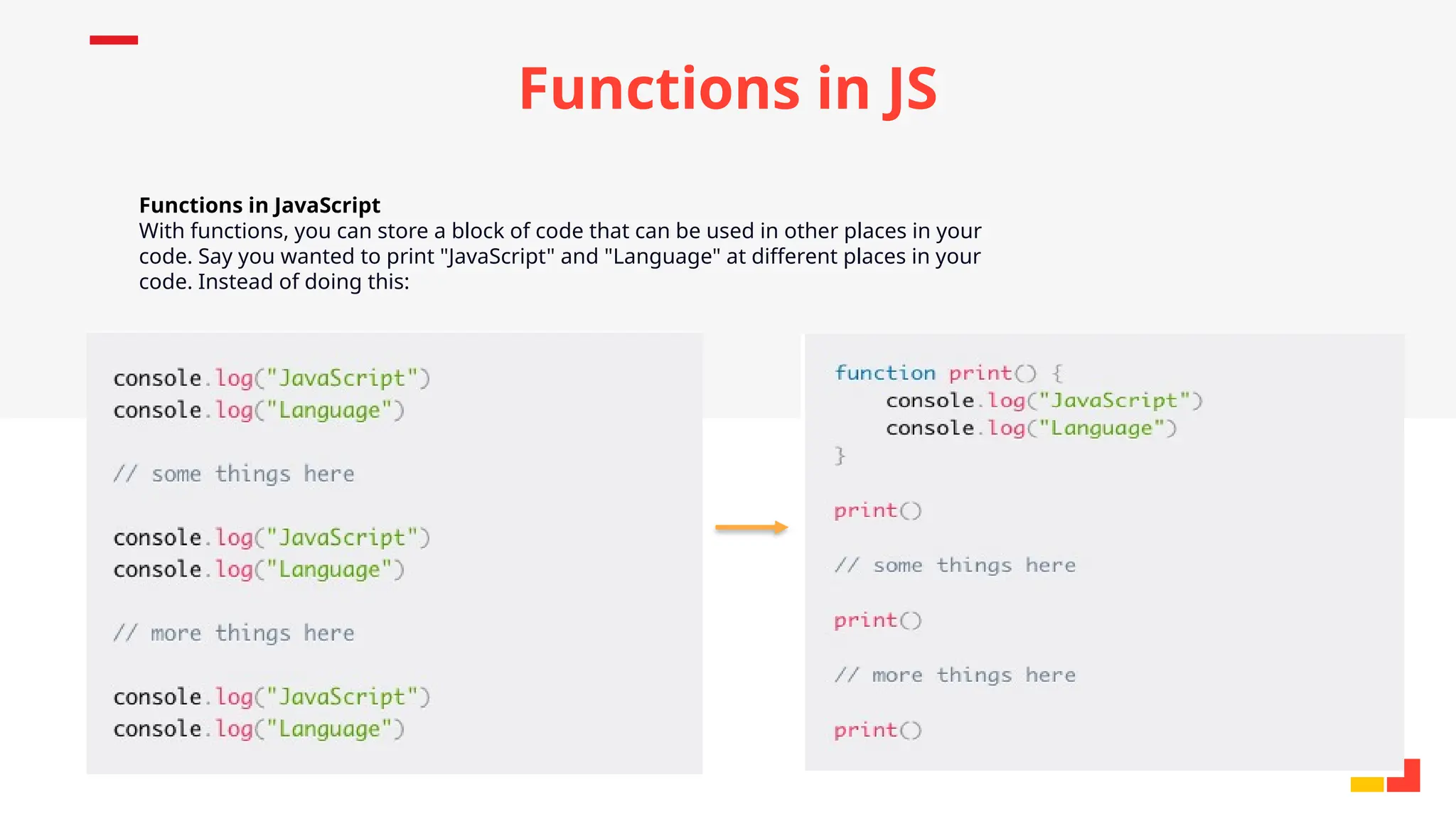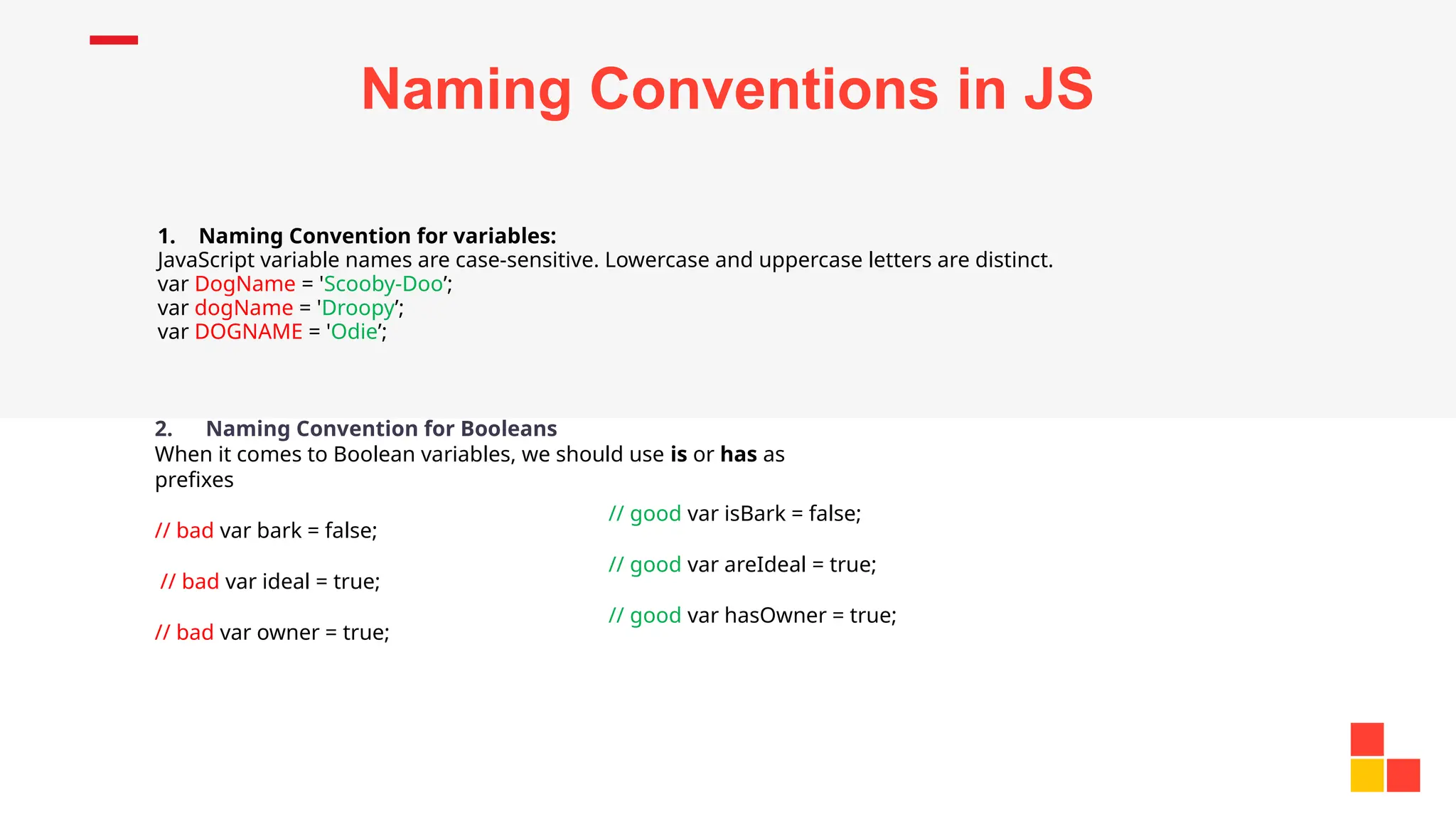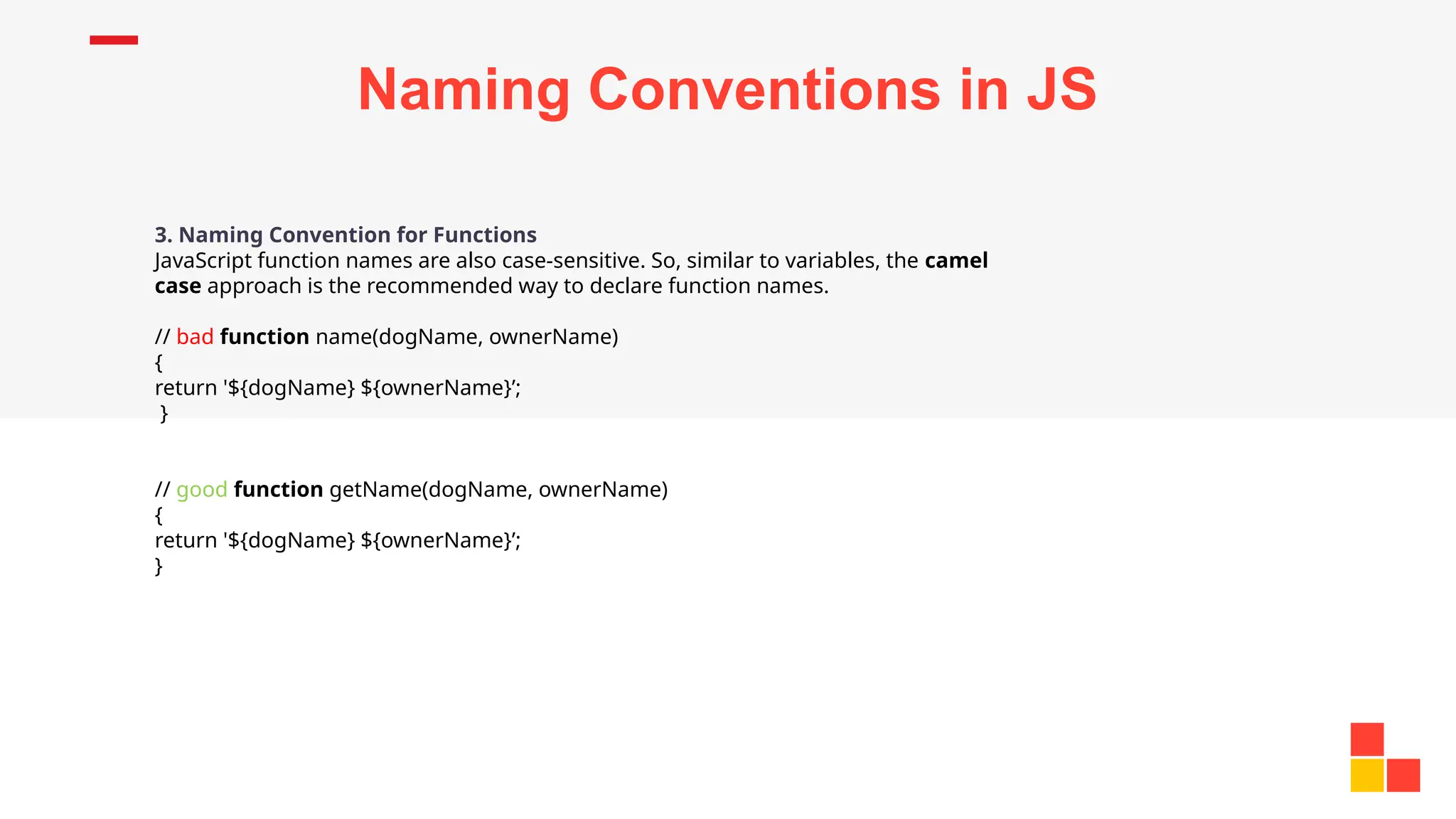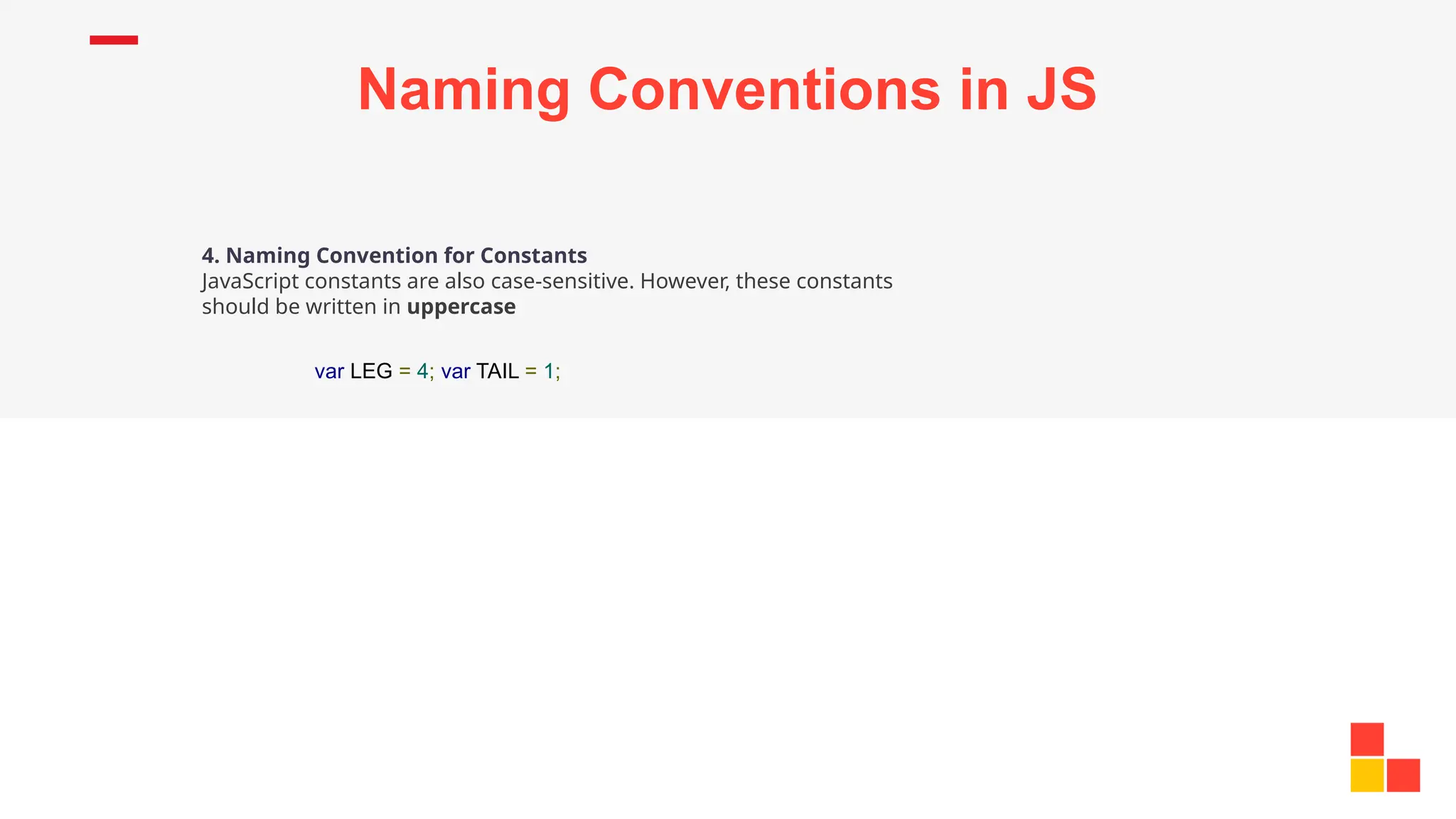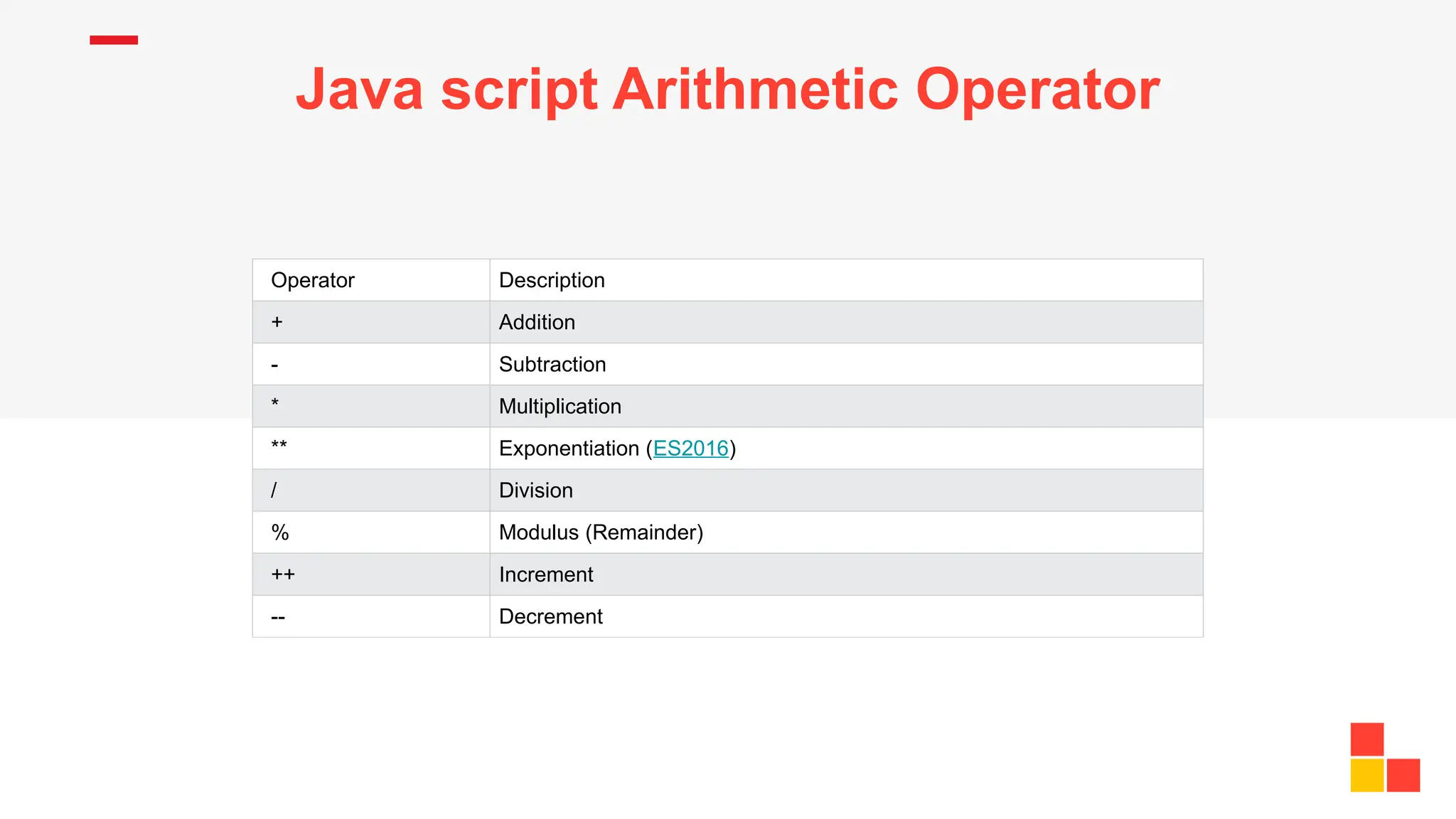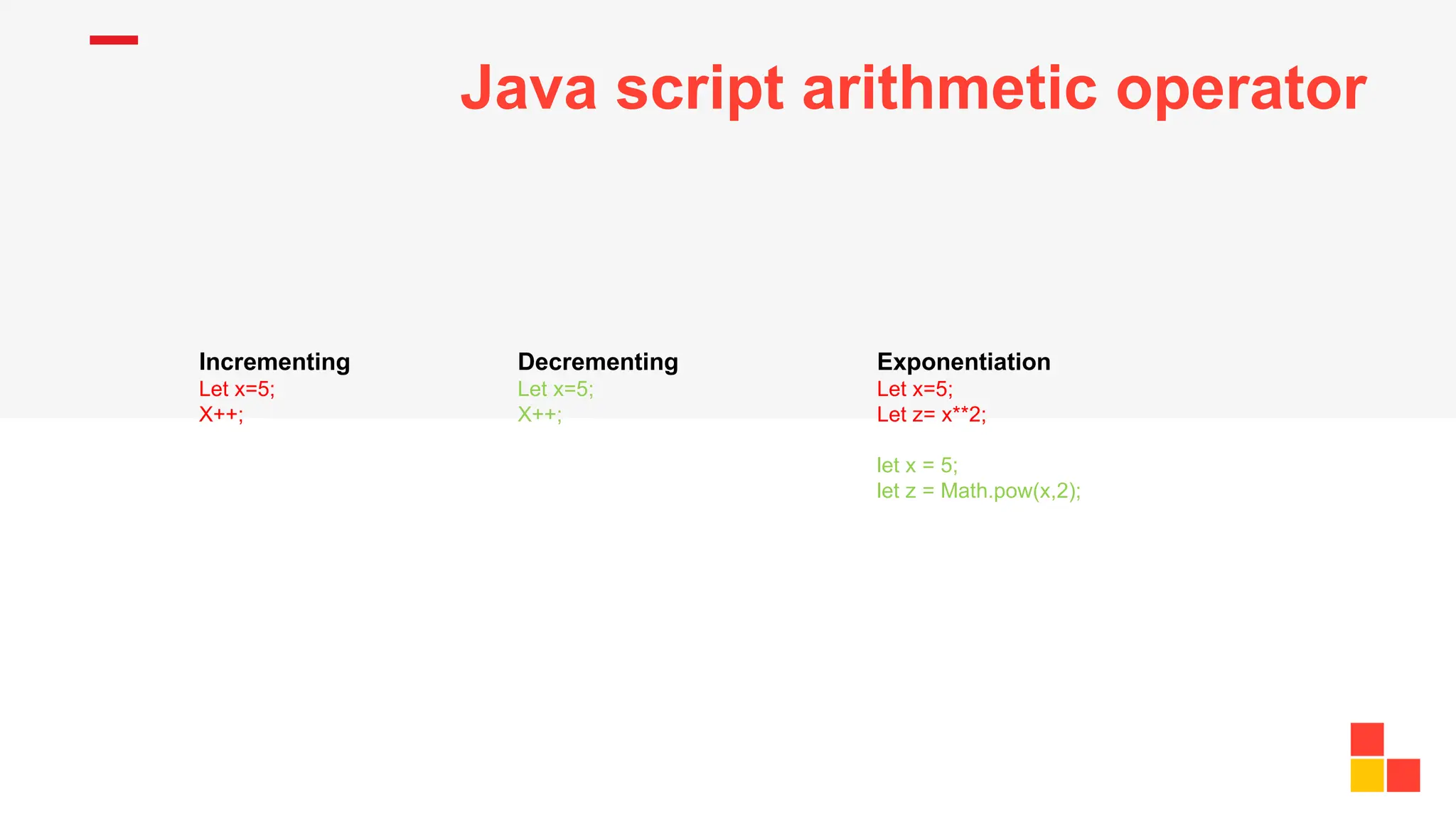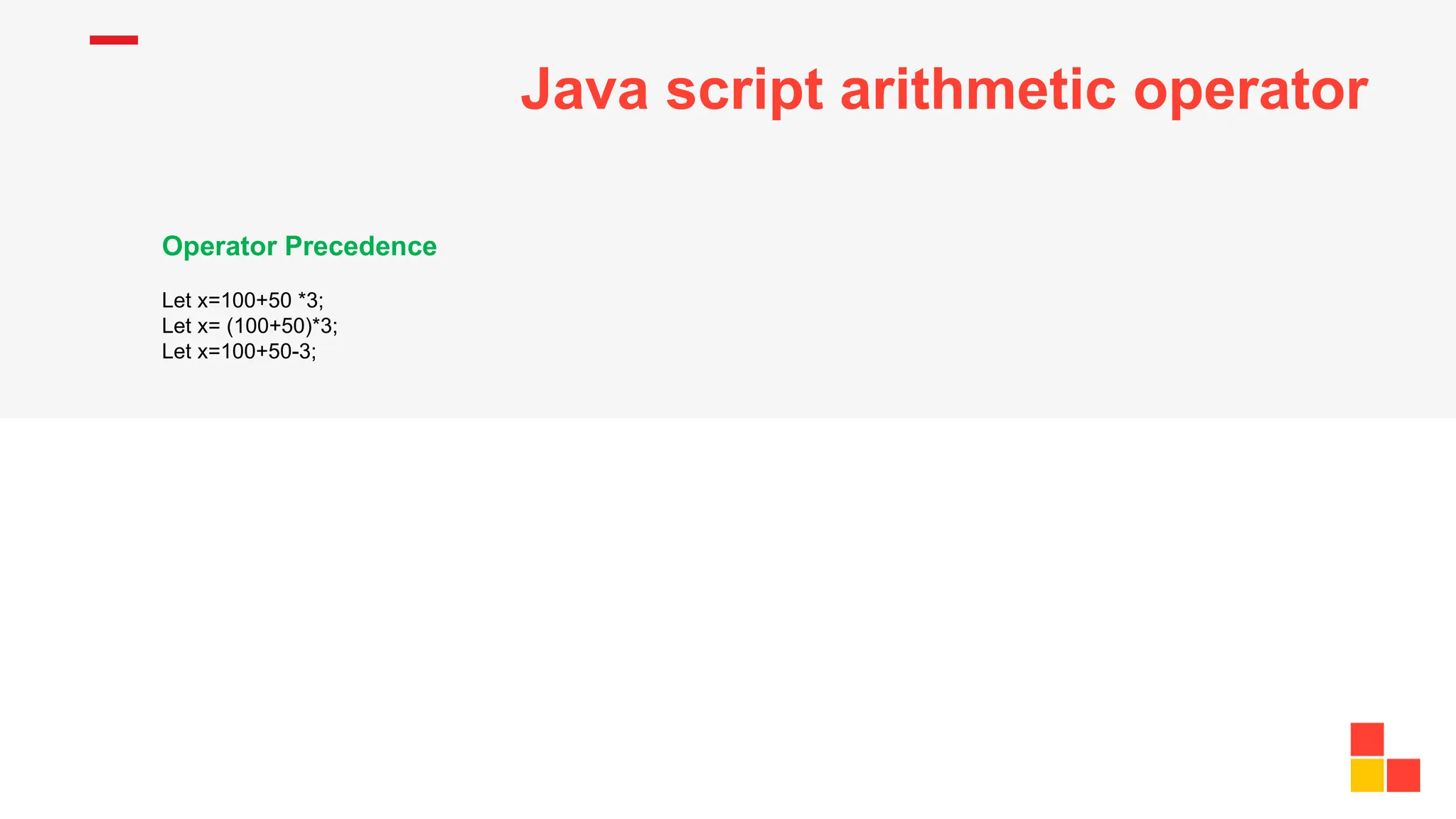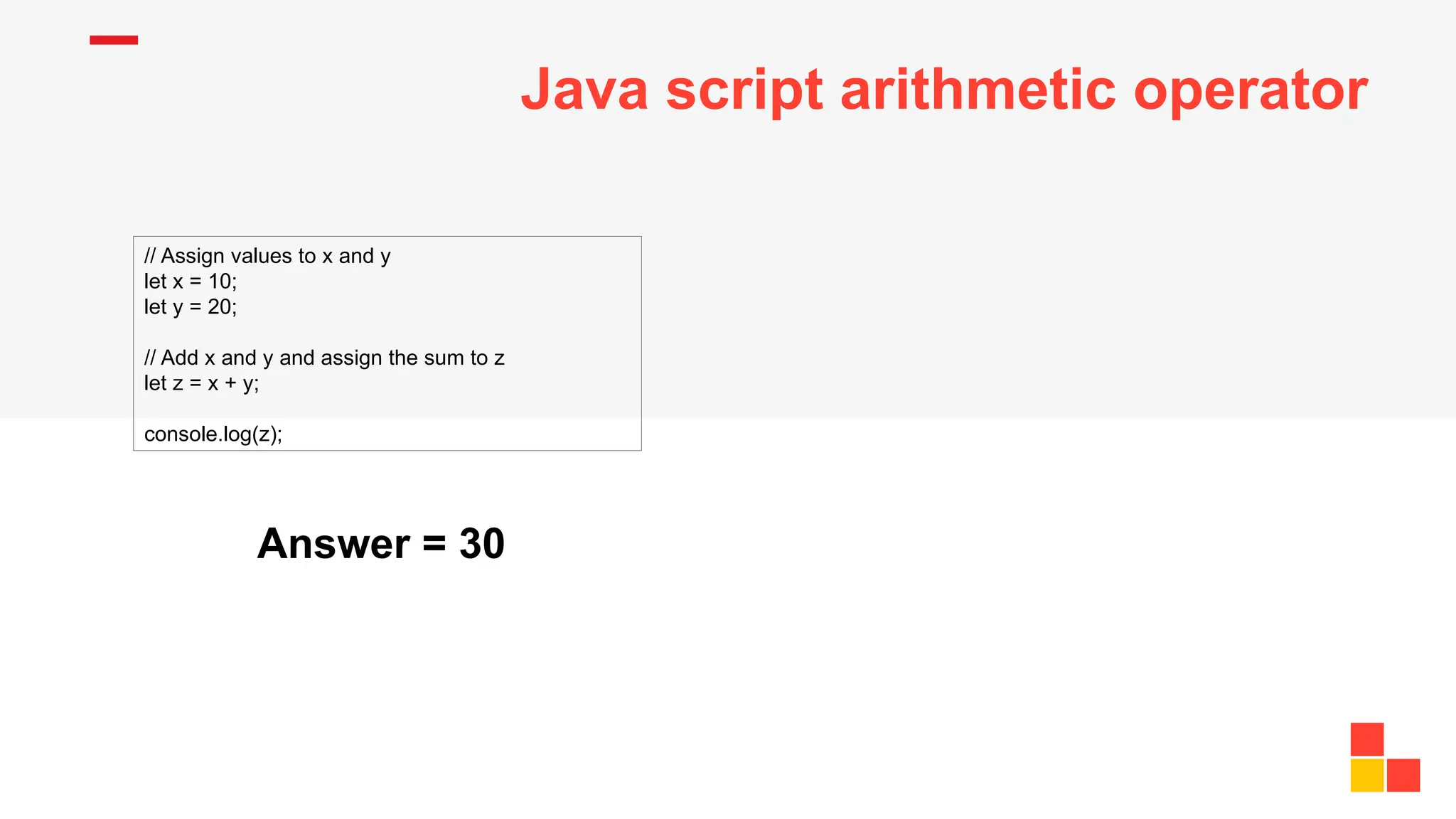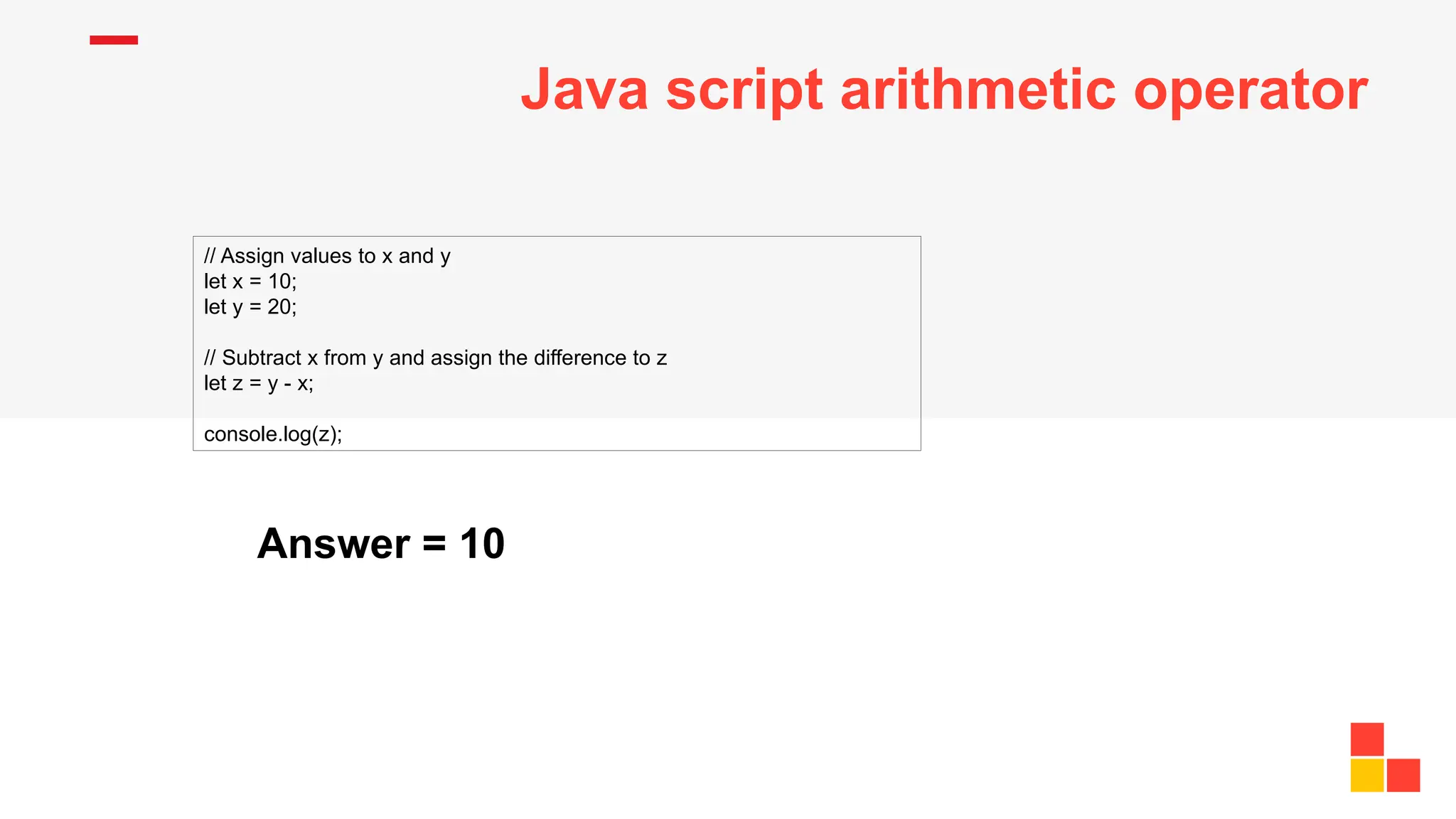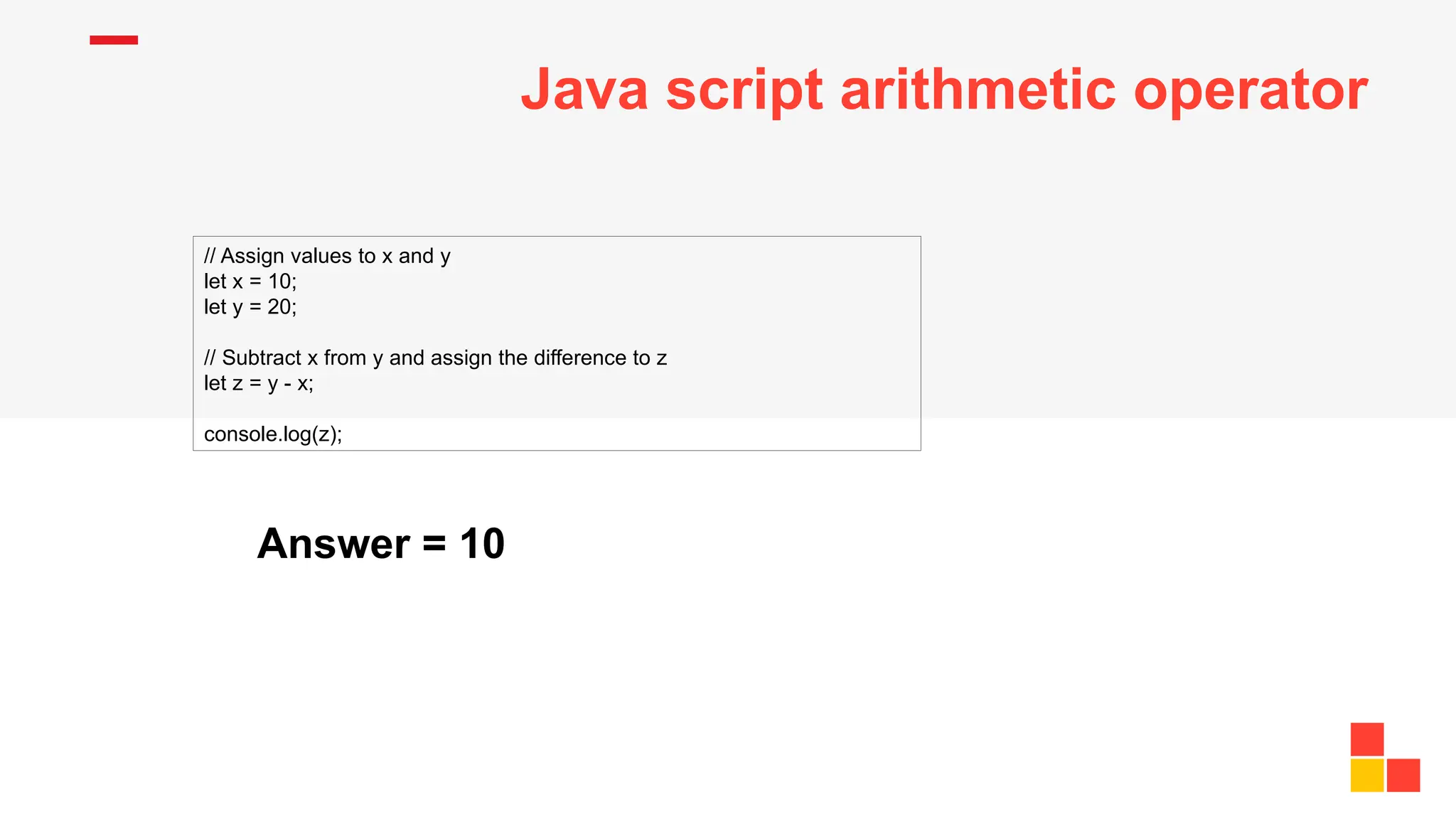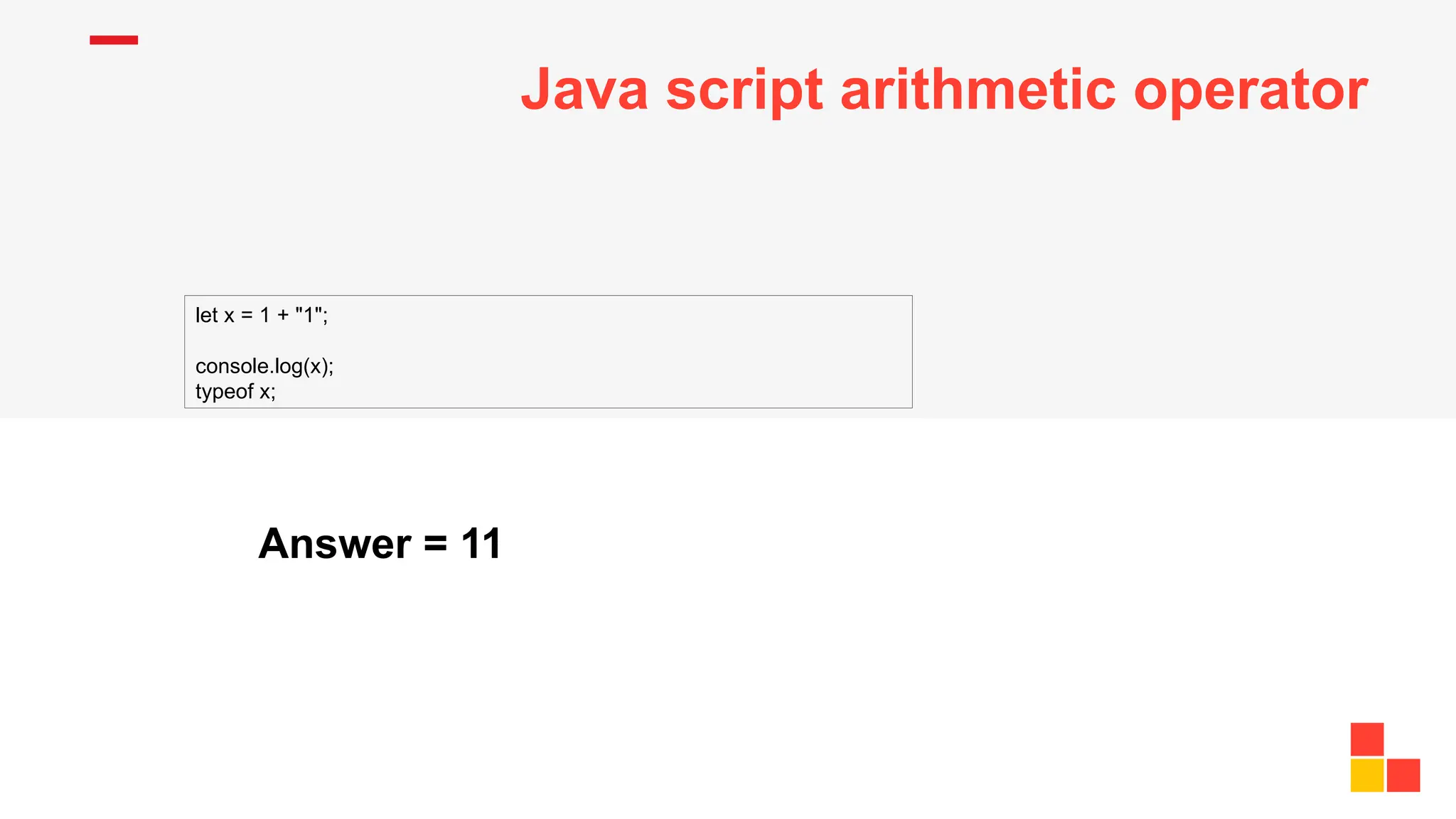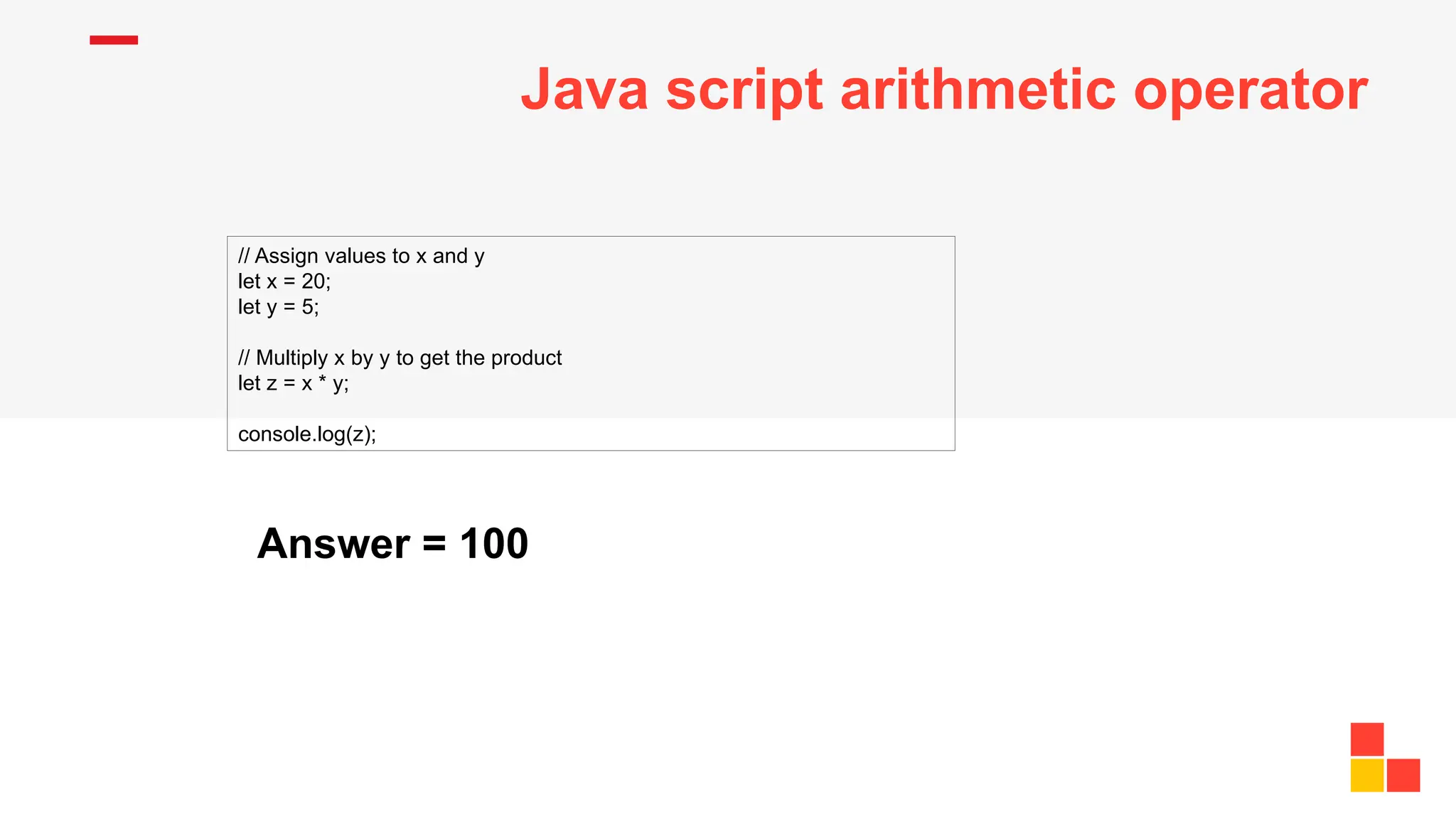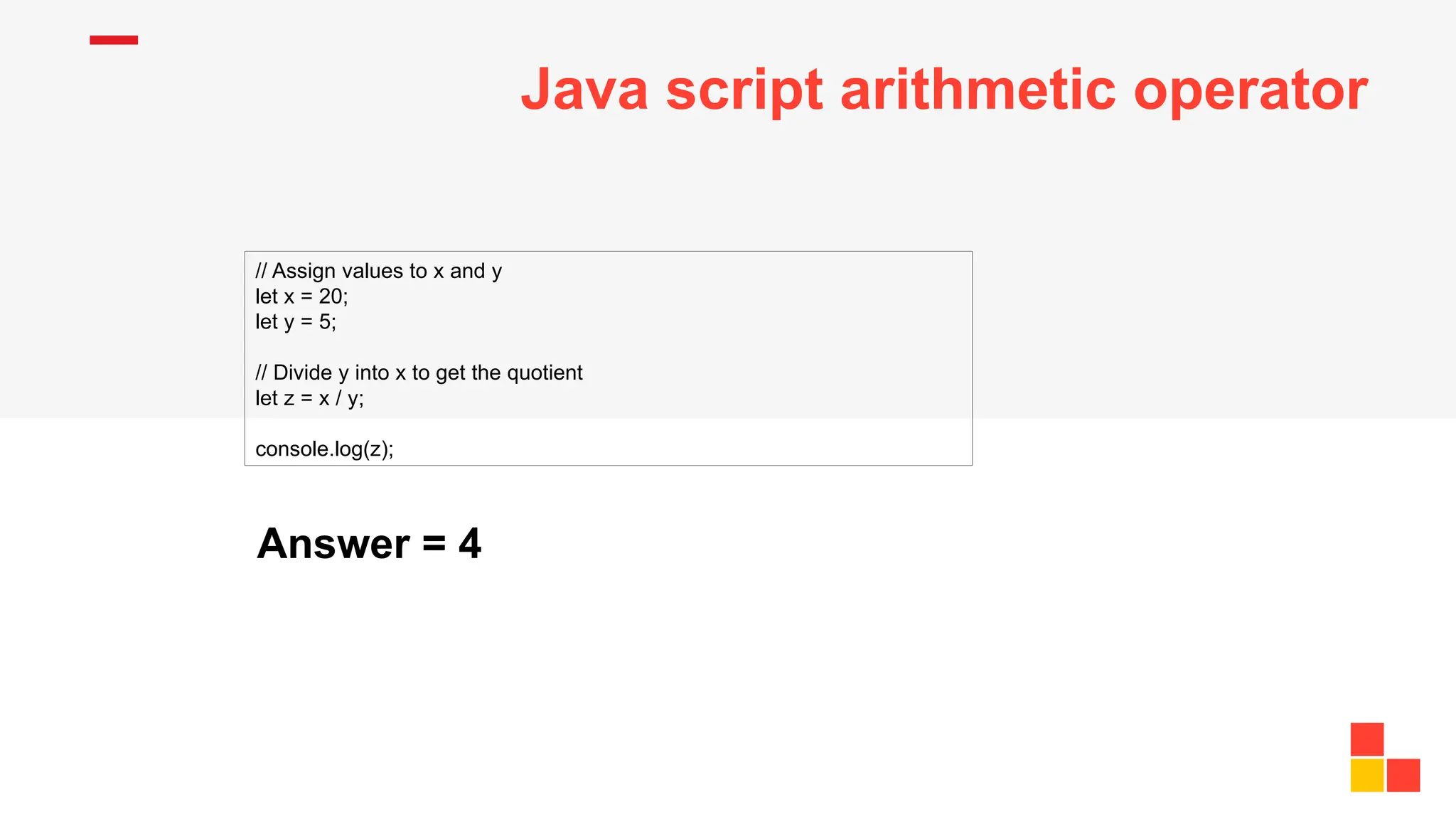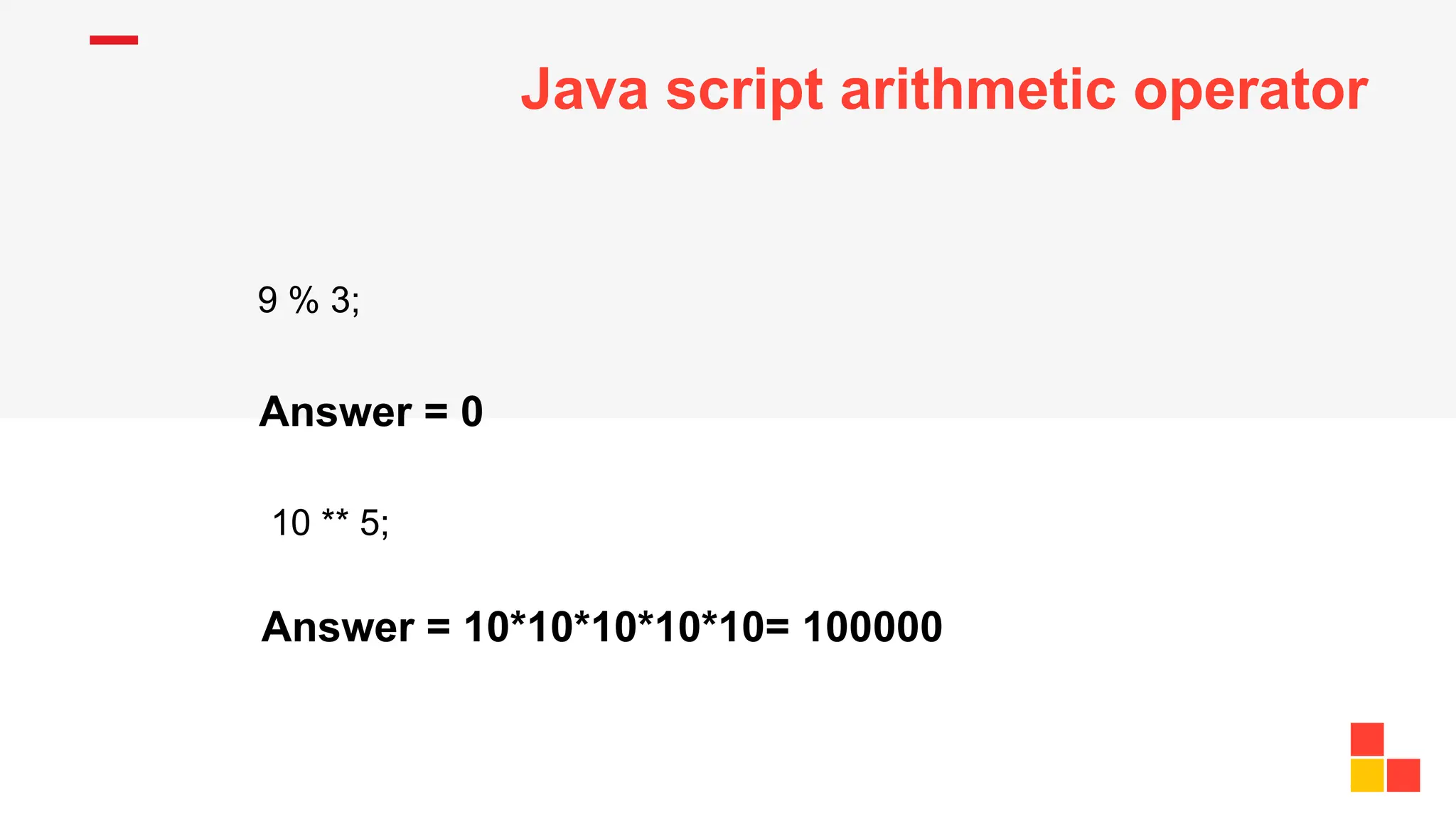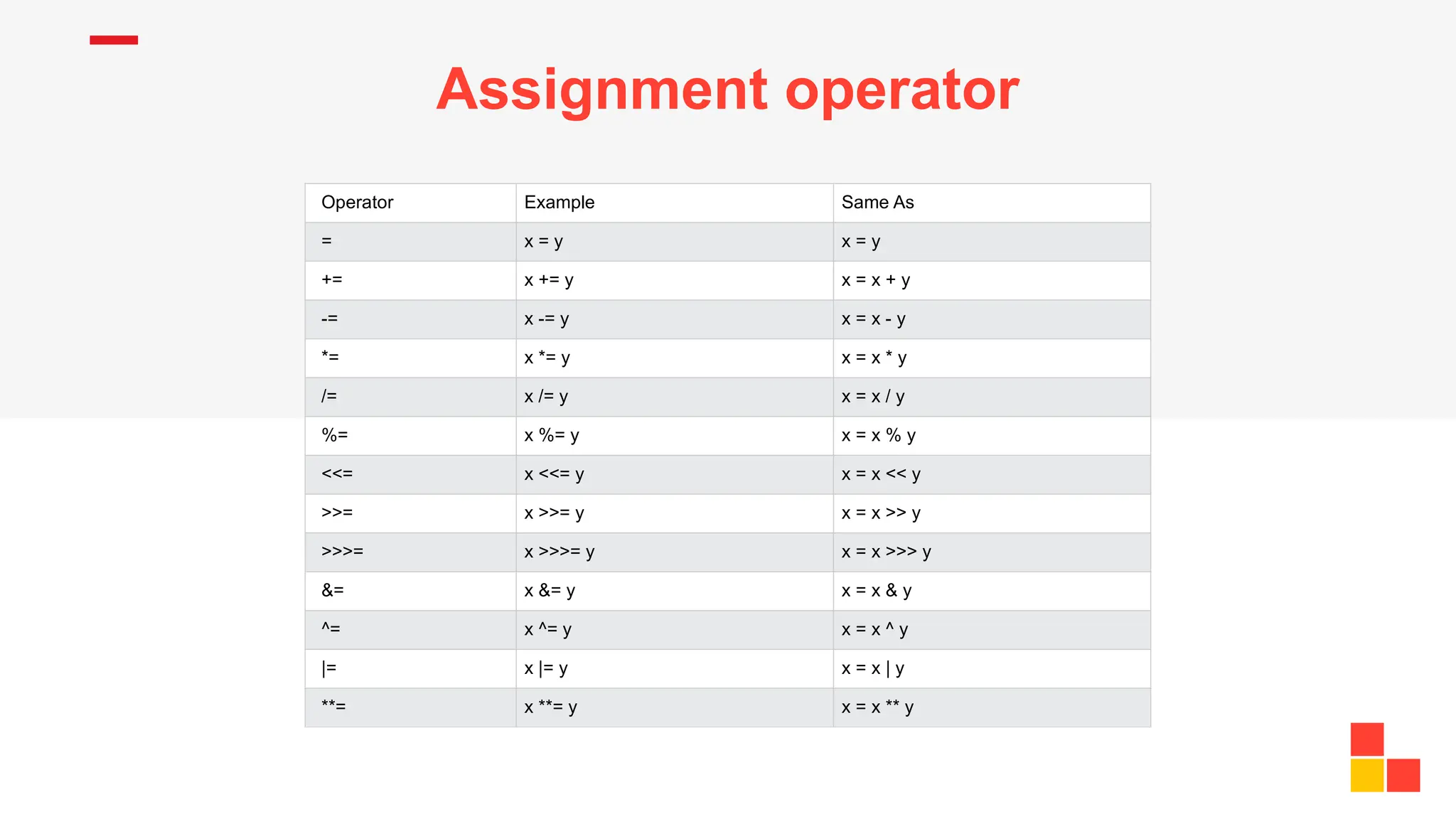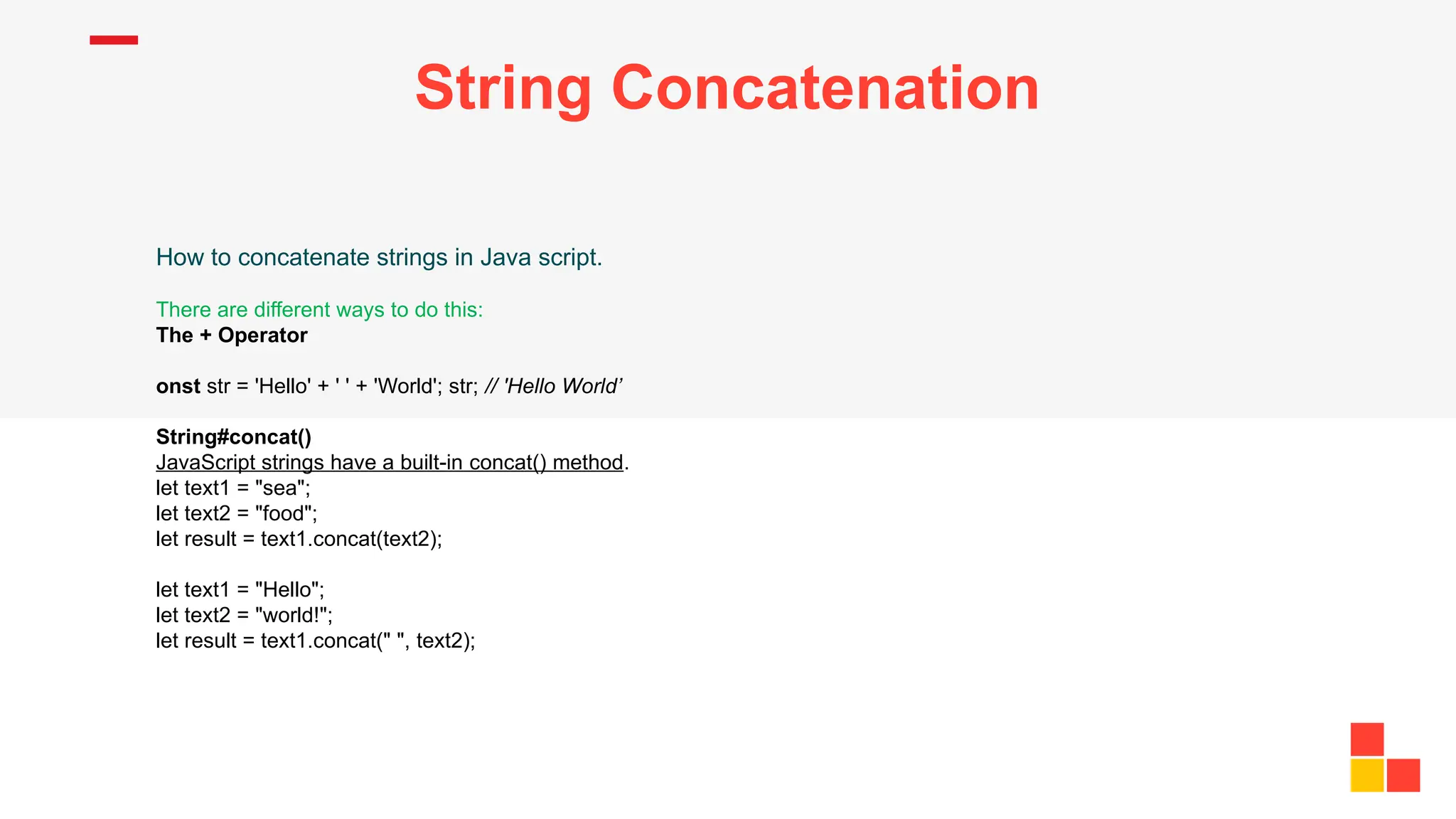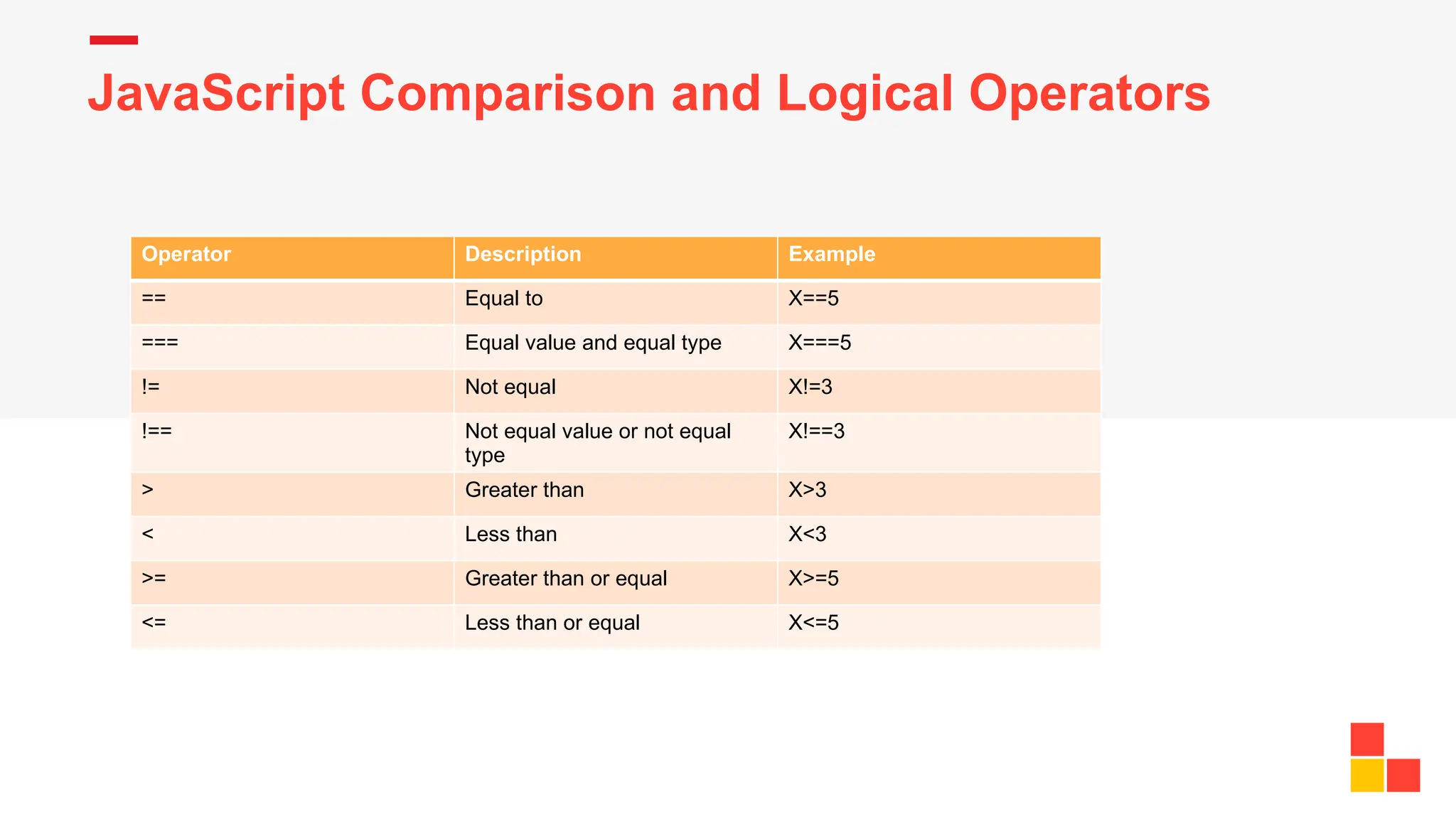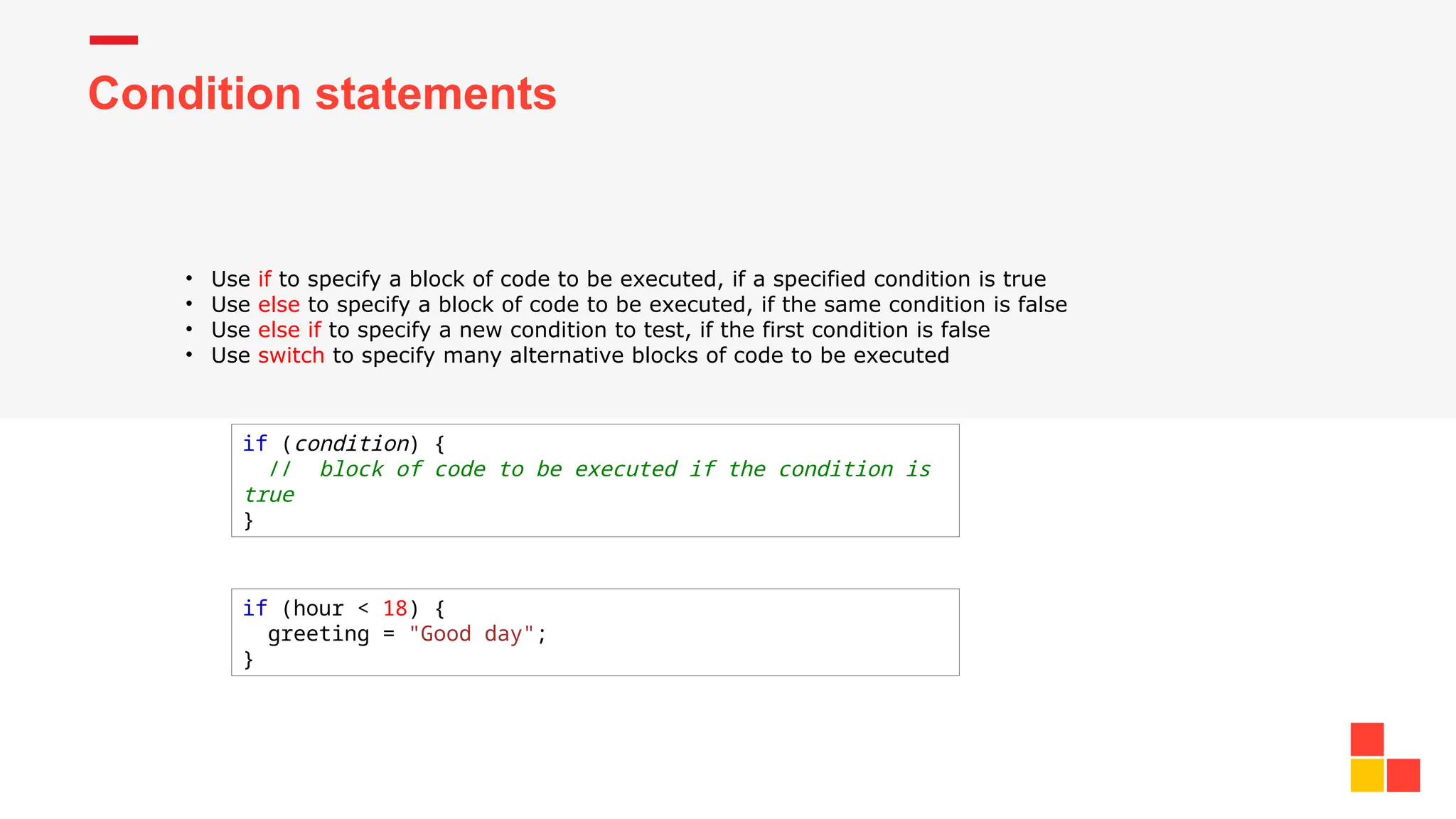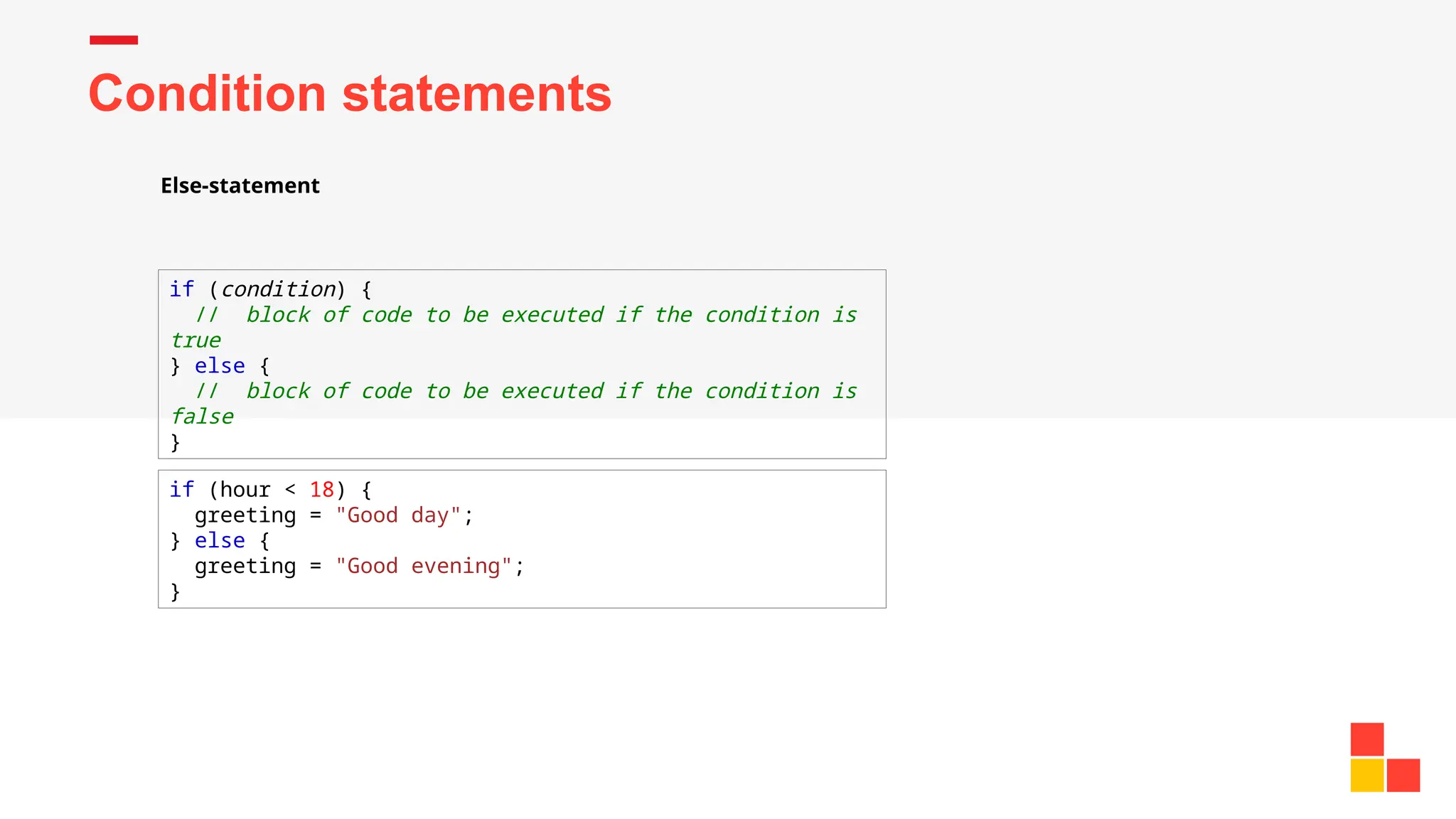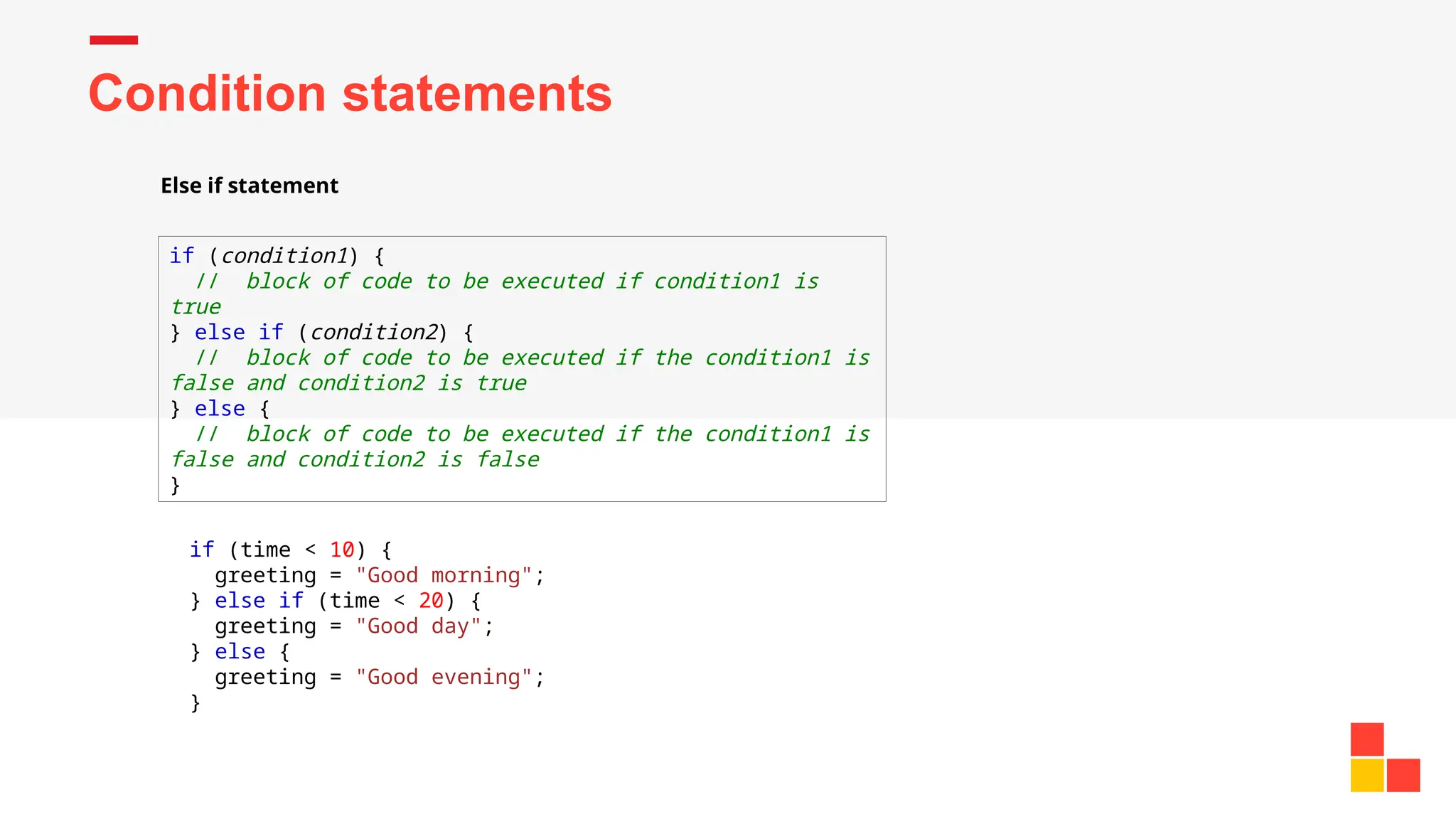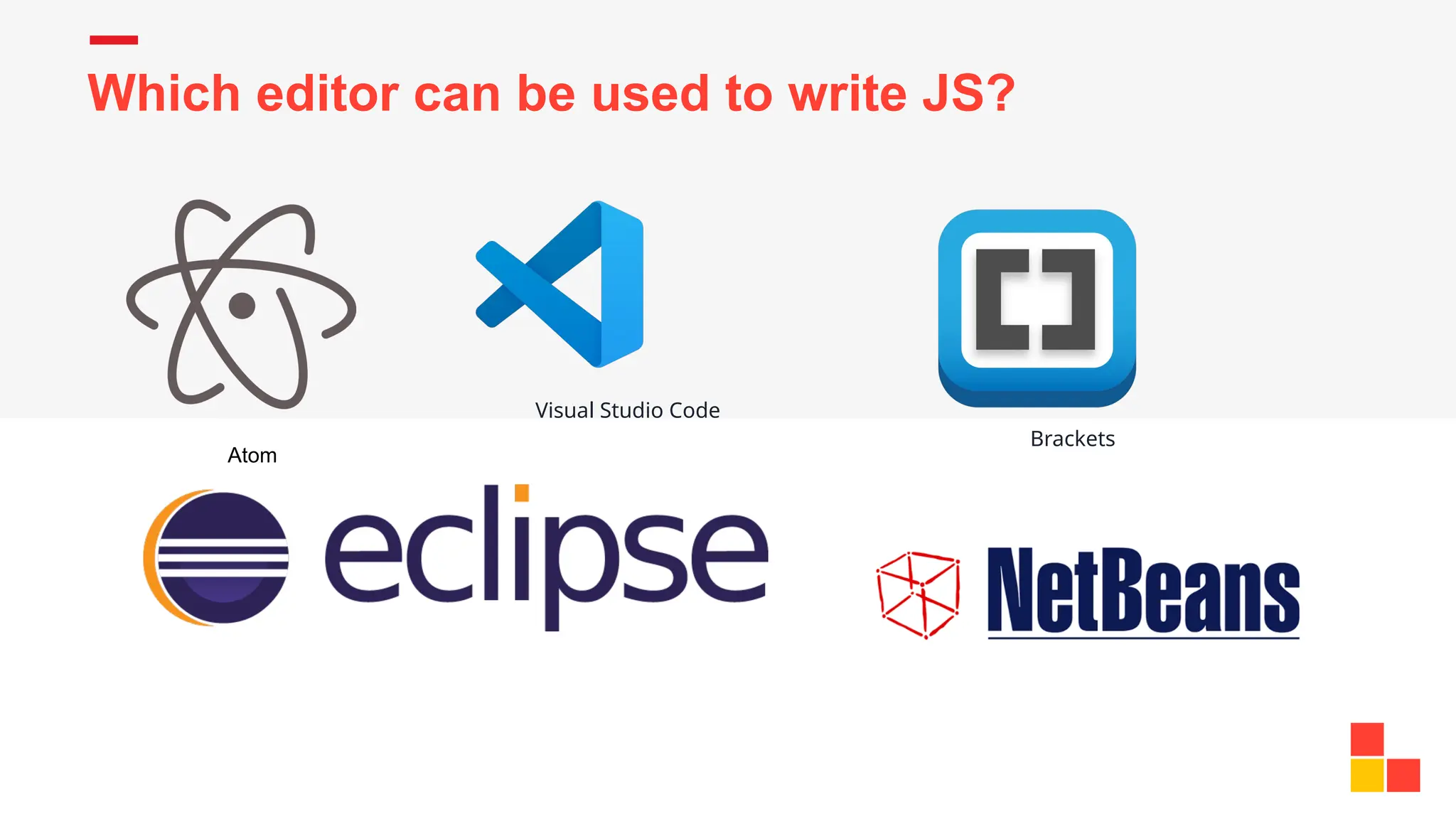The document discusses pseudocode as an informal programming description that helps programmers outline software requirements and improve code readability. It also explains JavaScript, a dynamic programming language essential for web development, detailing its variable declarations, data types, and various coding conventions. Additionally, it covers fundamental aspects of JavaScript such as functions, comments, arithmetic operators, and conditional statements.
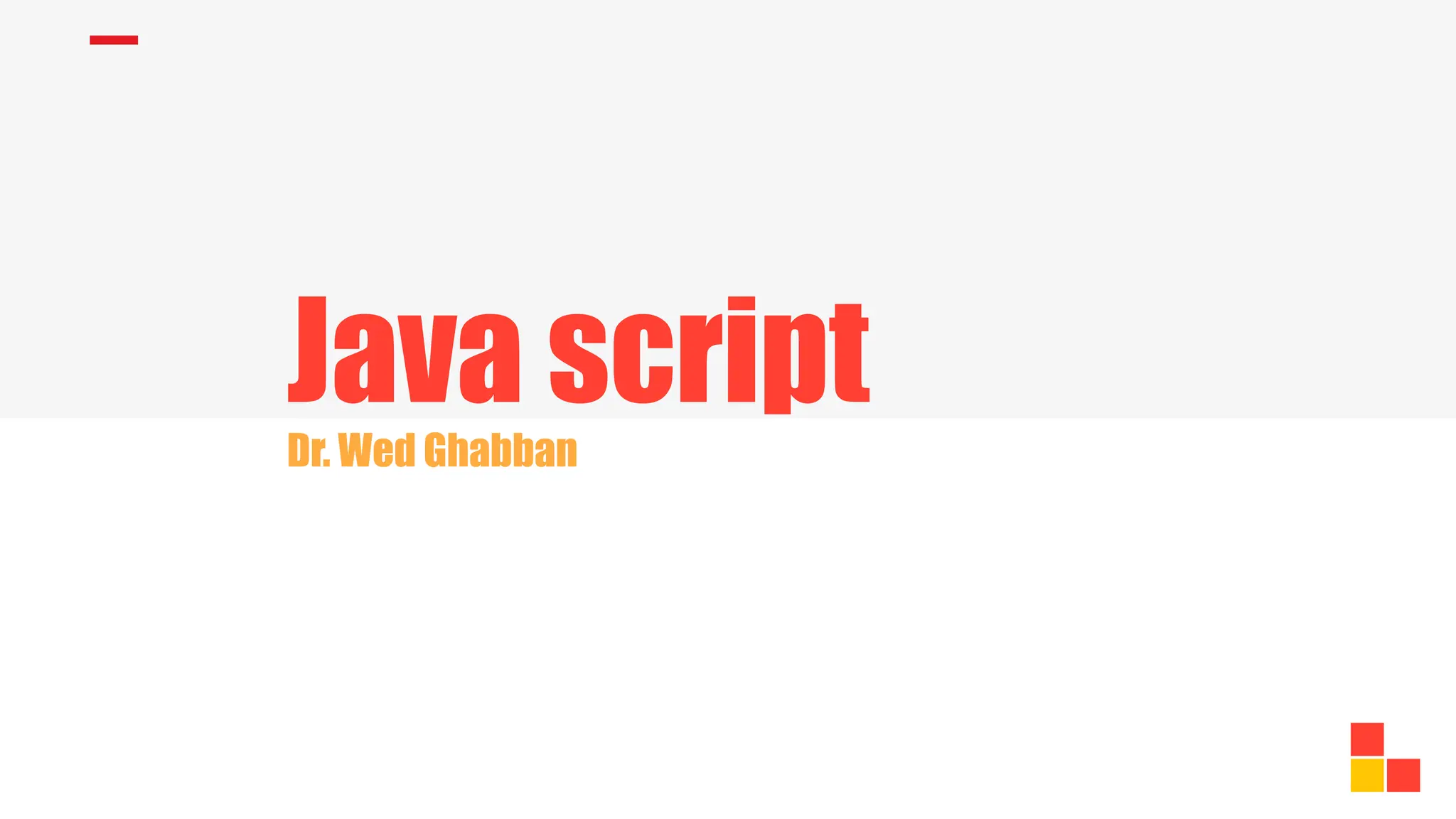
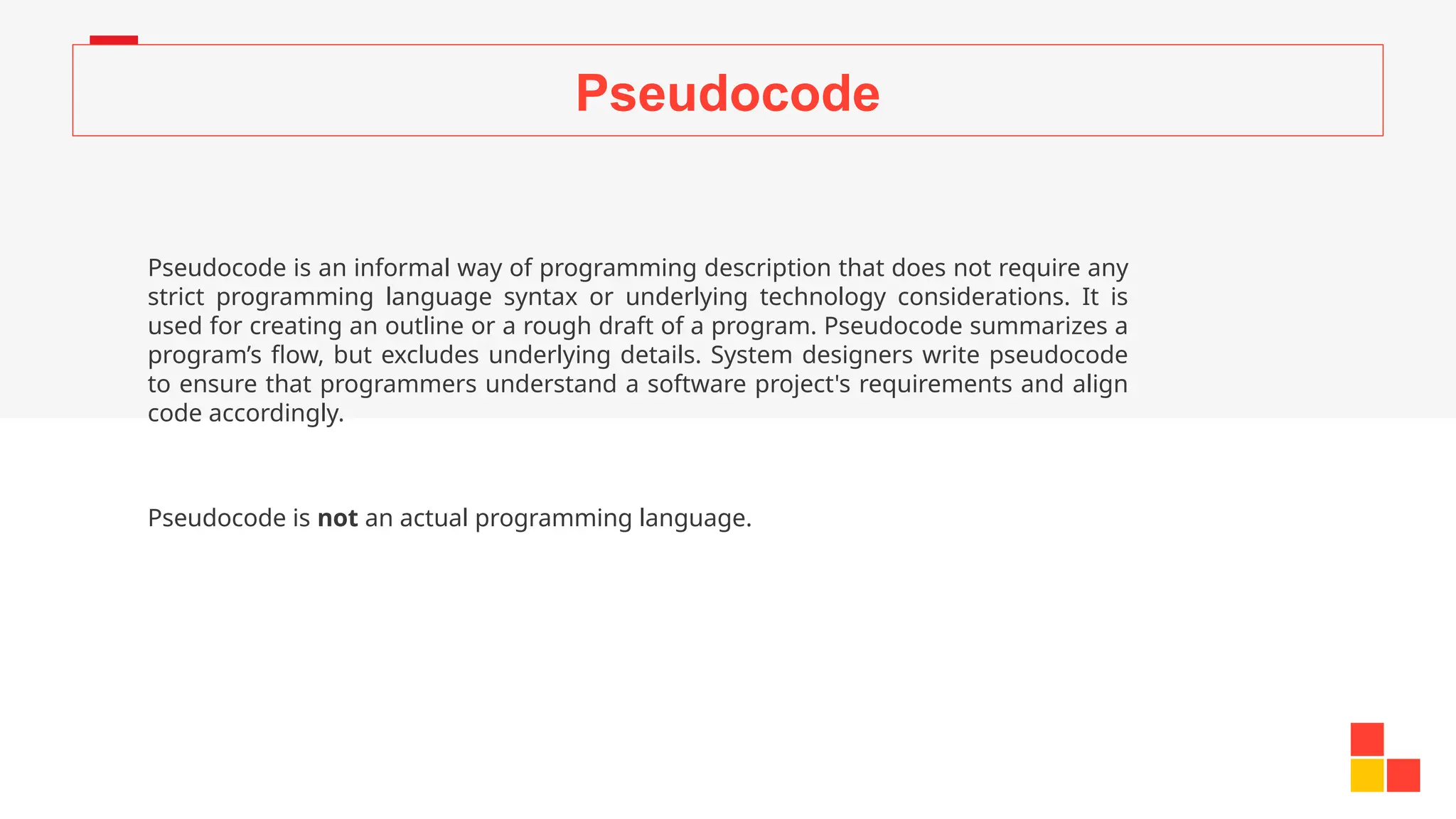
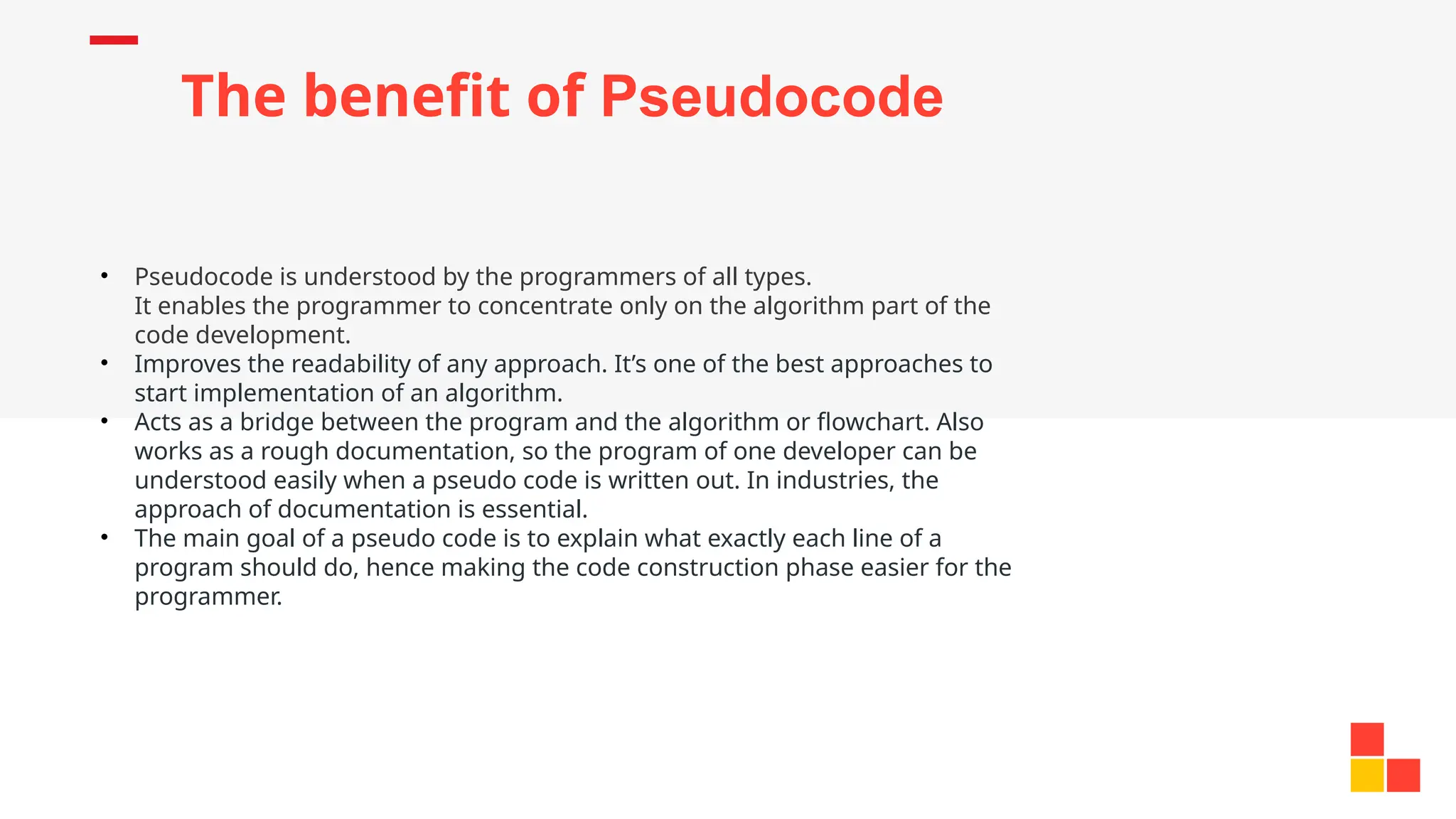
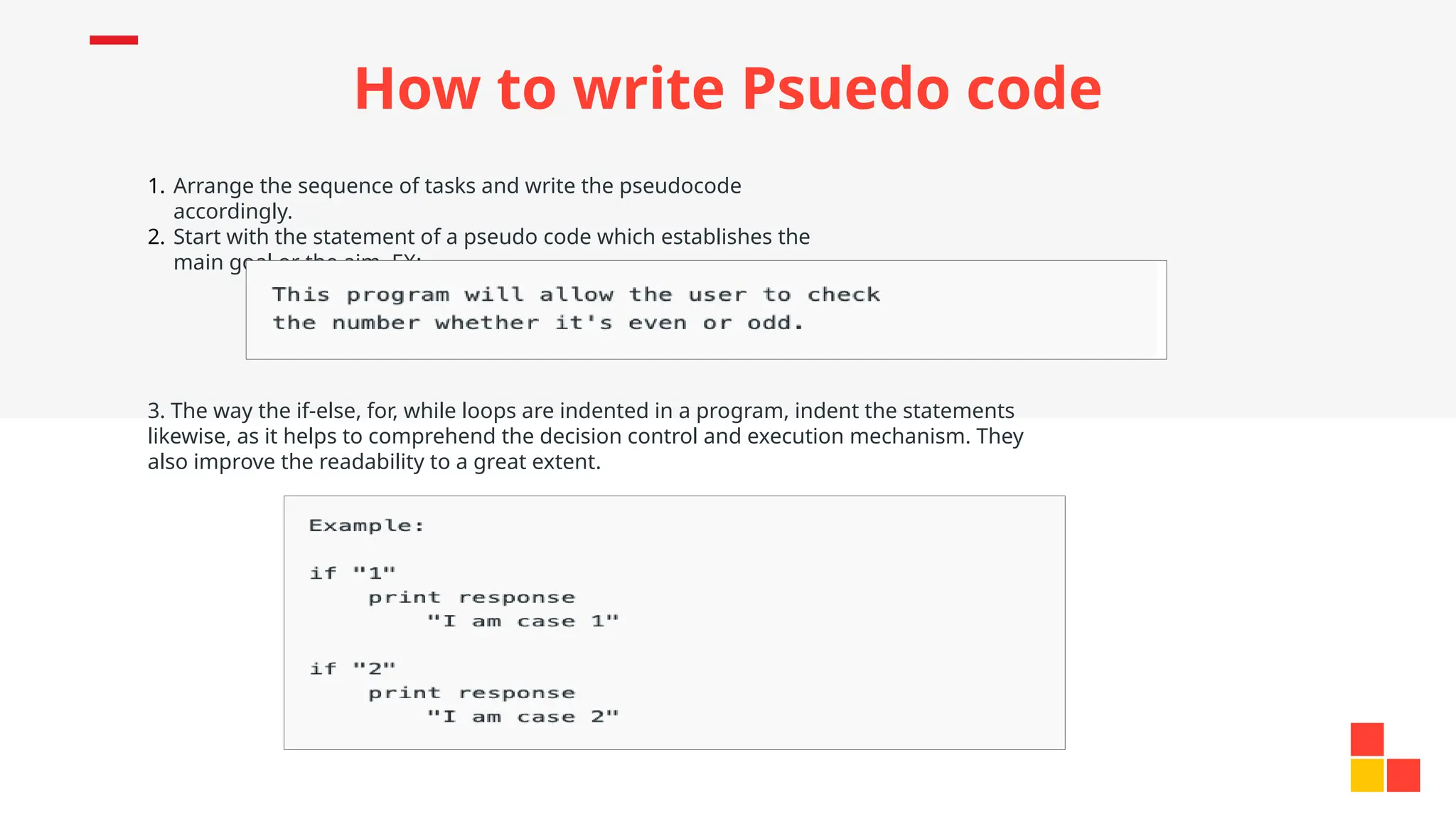
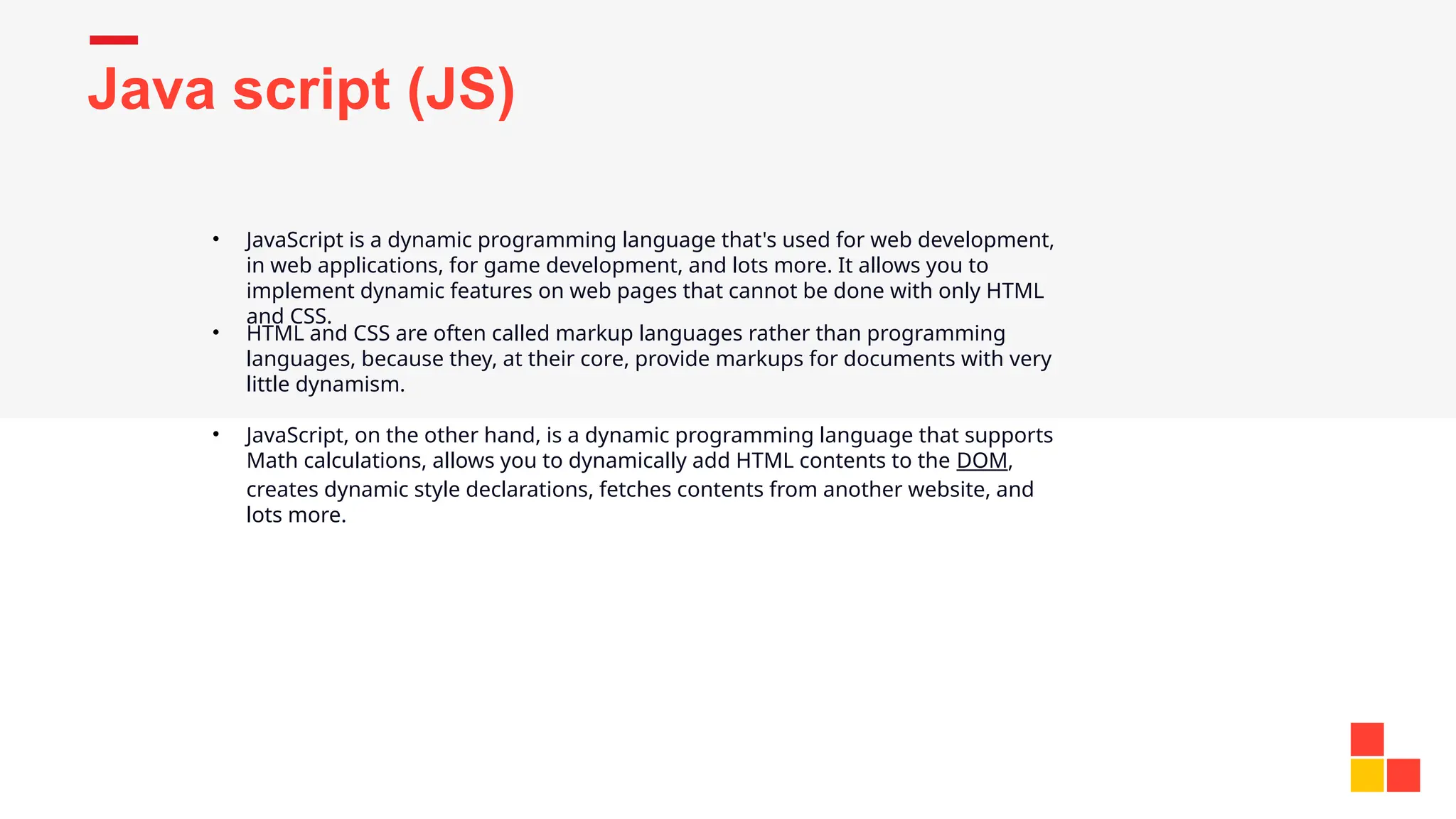
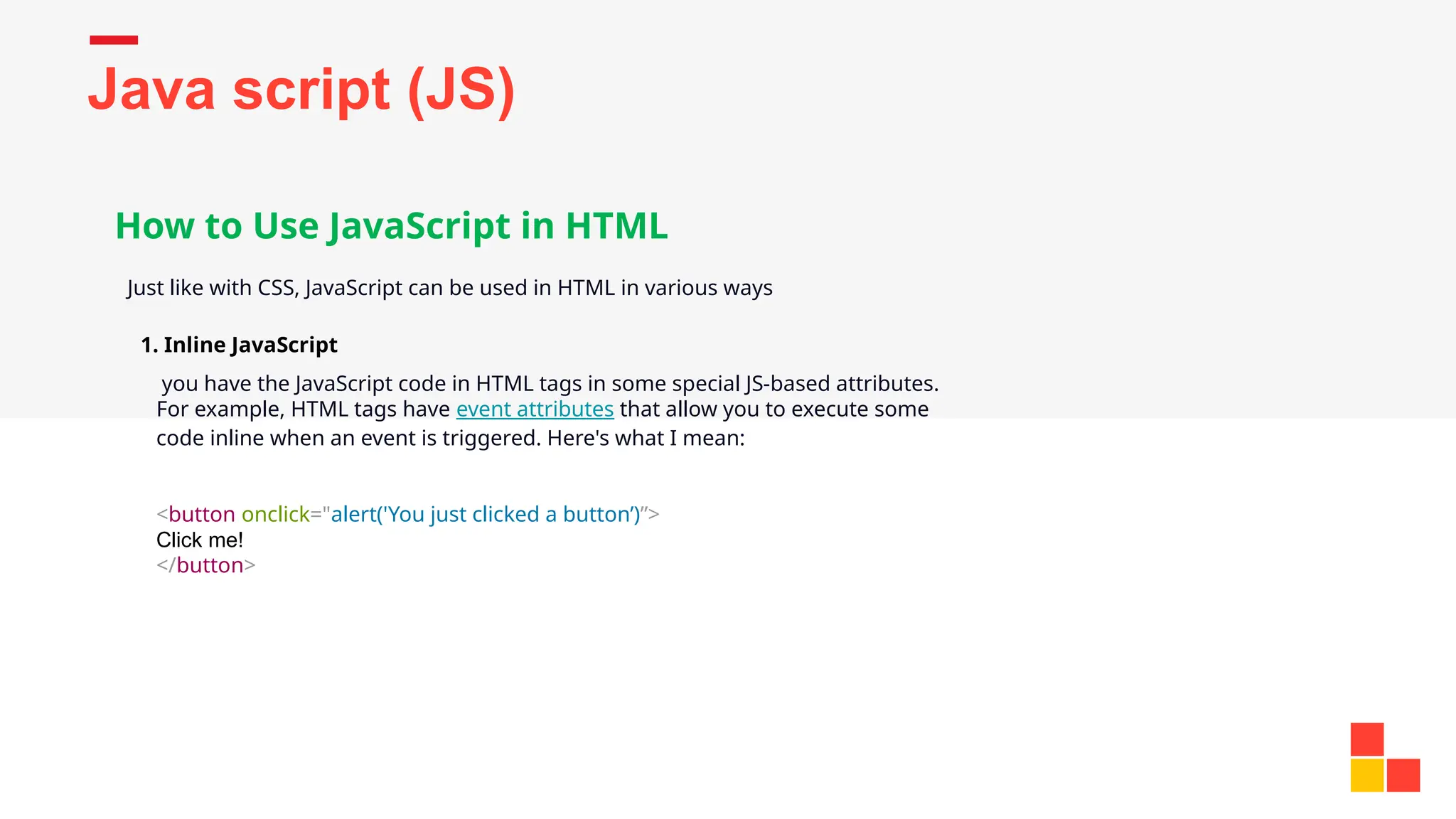
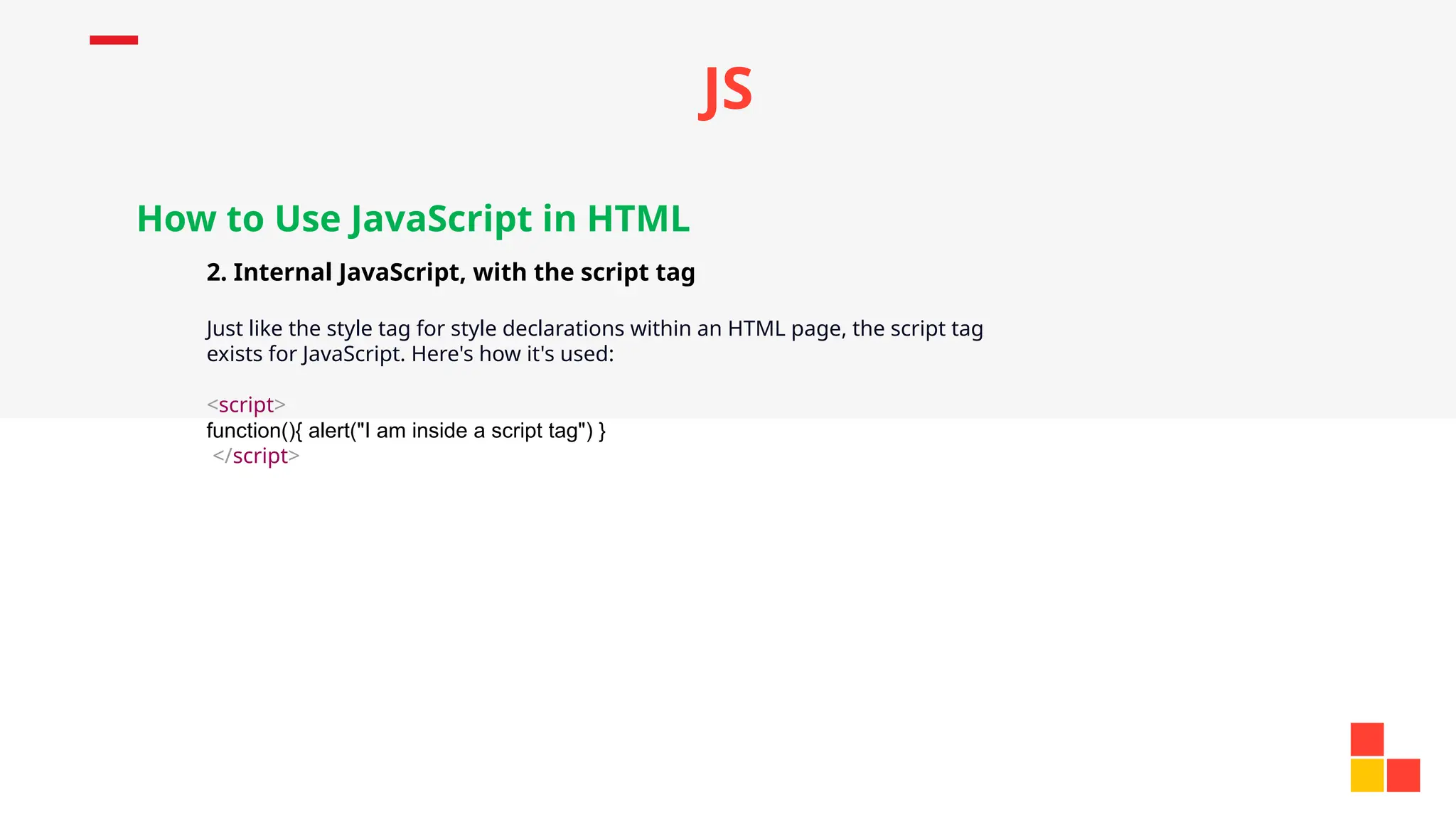
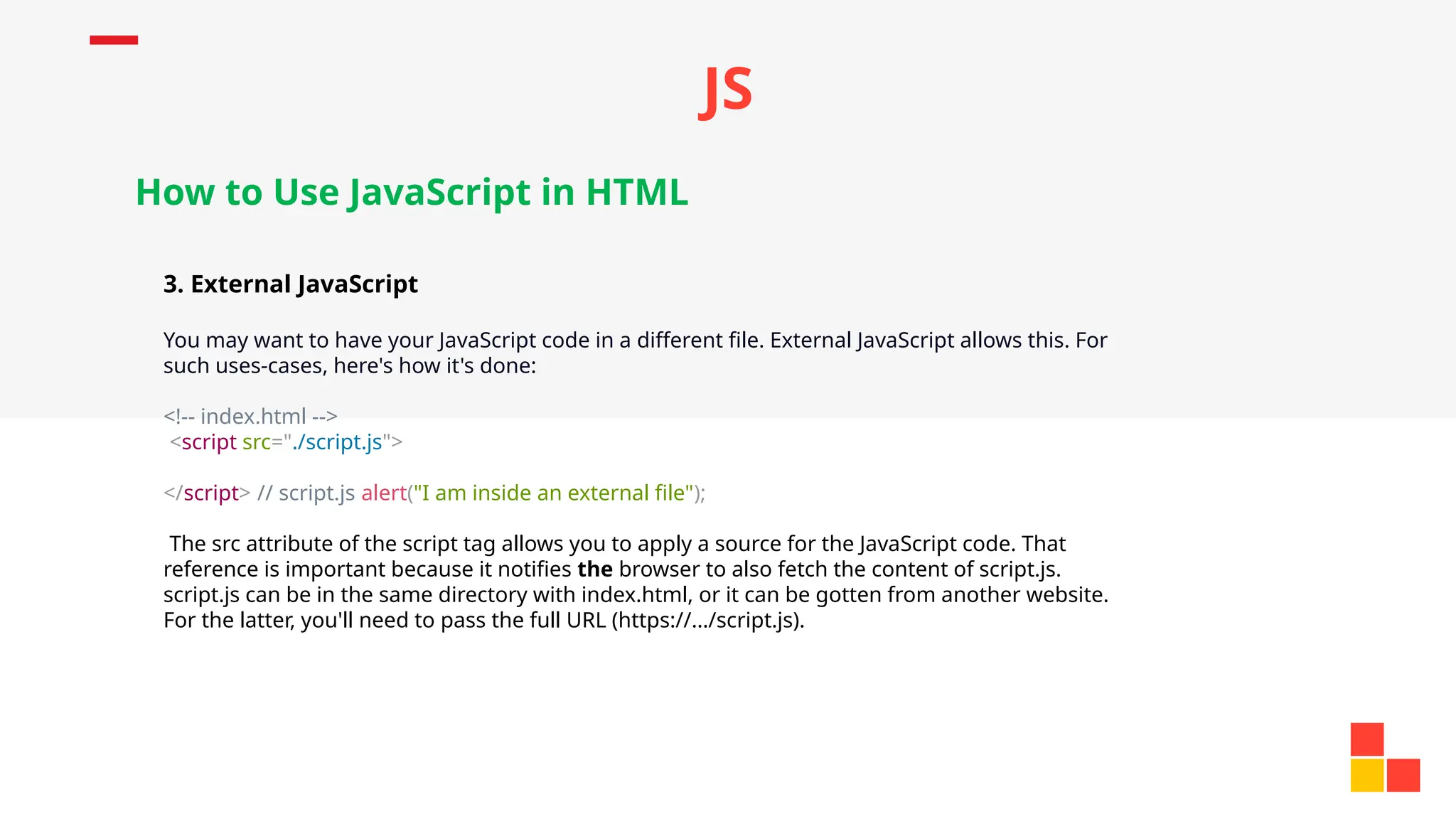
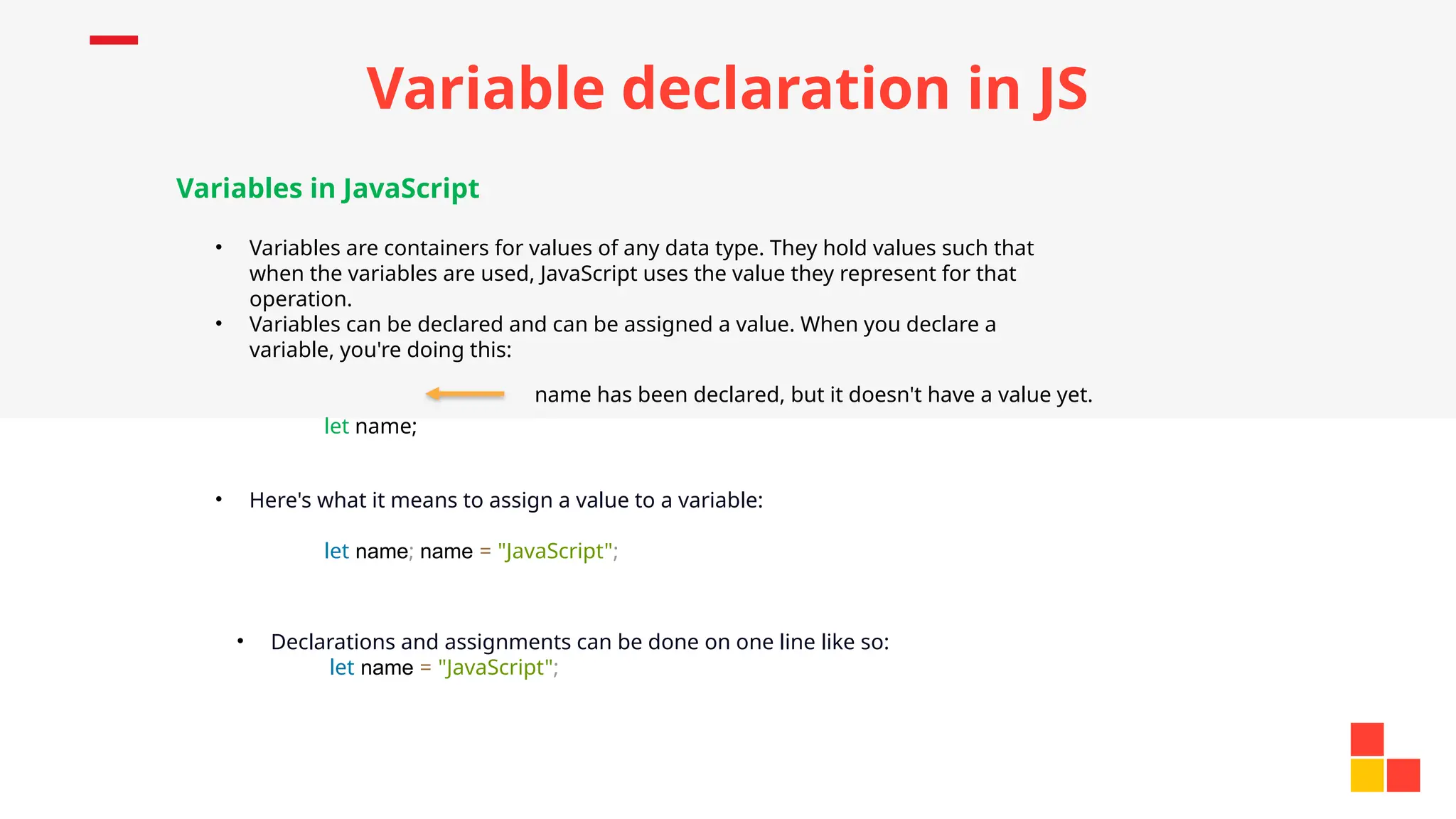
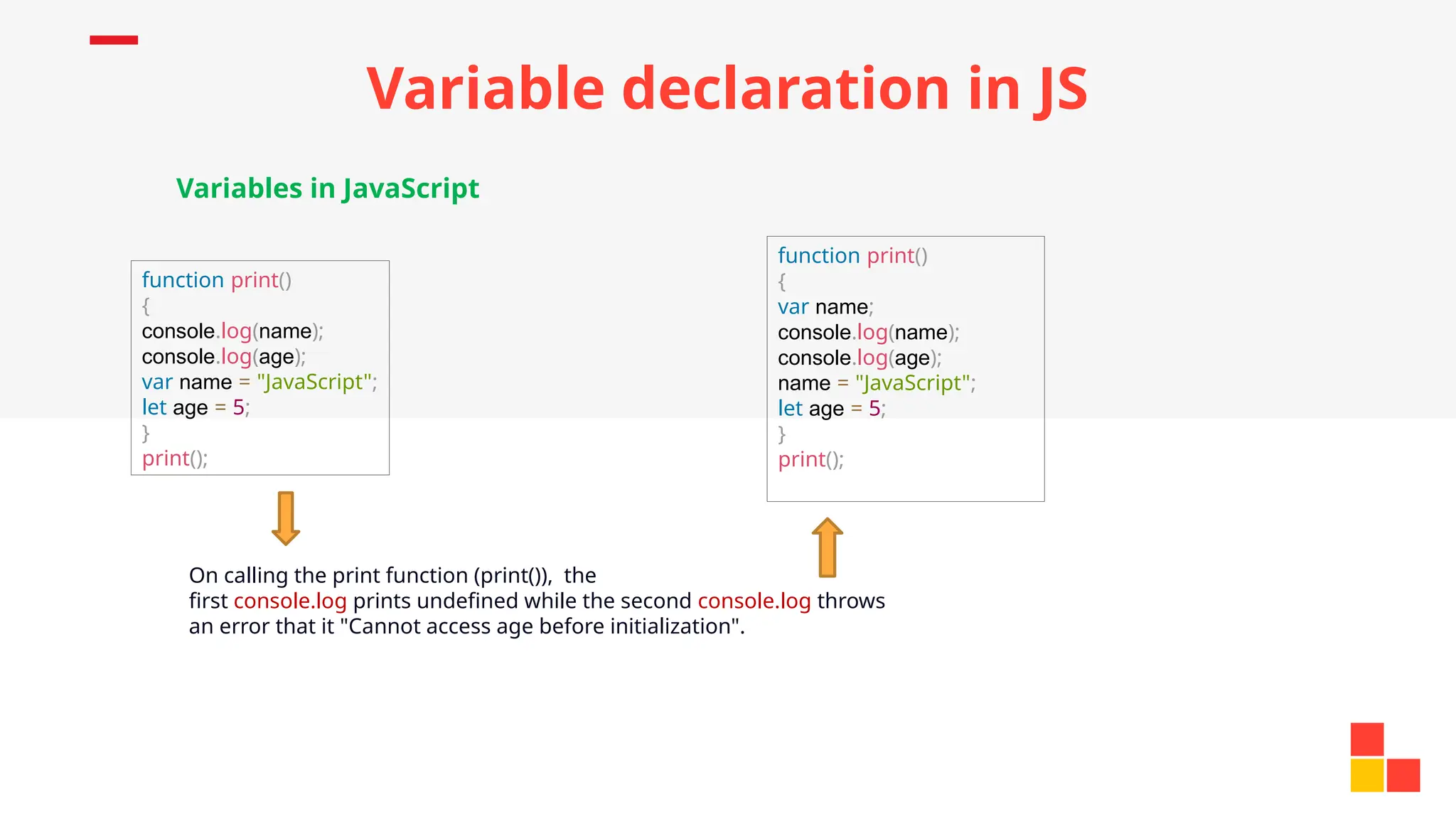
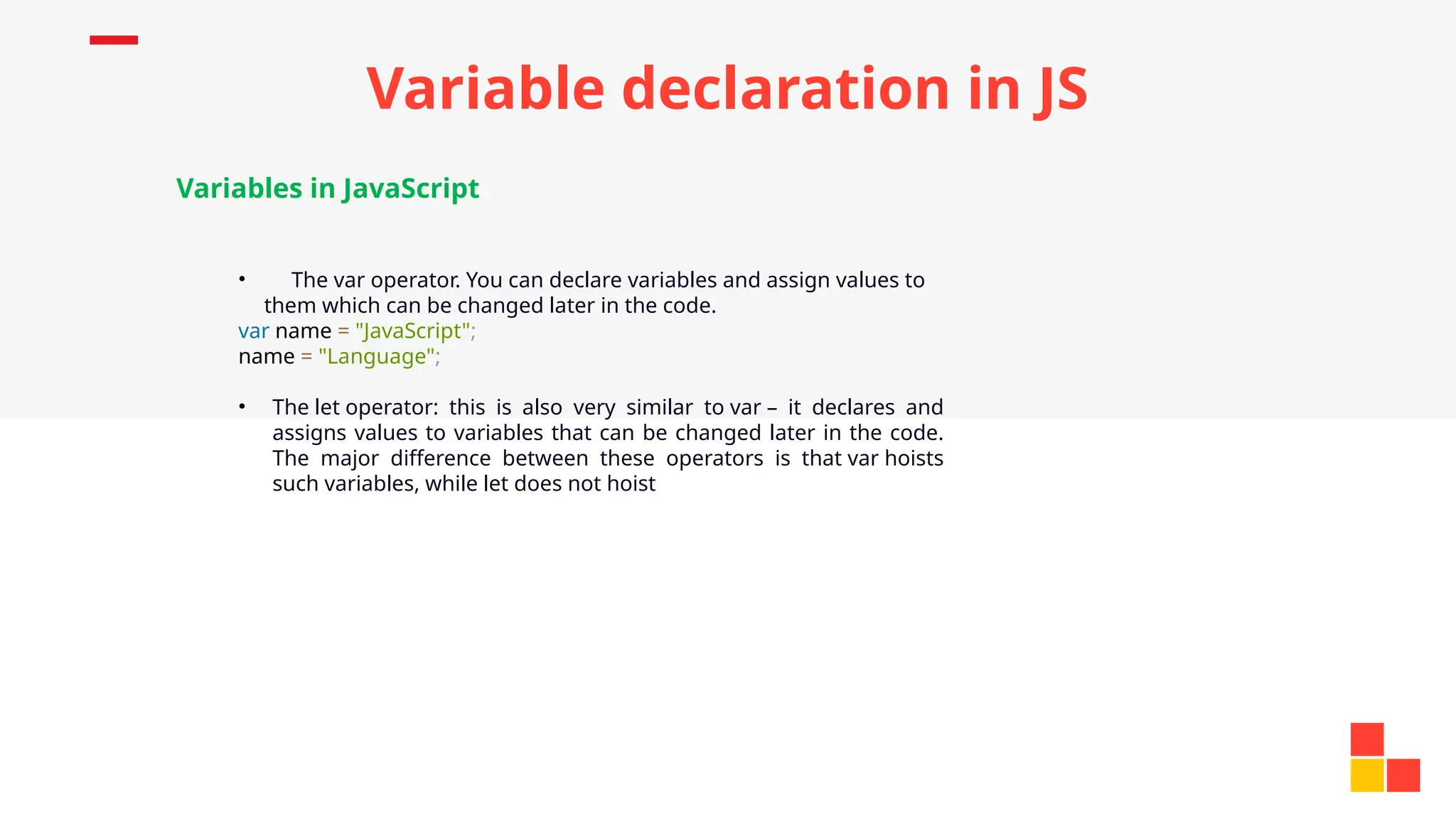
![Data types in JS Different types of variable can be identified: • Number (for example, 6, 7, 8.9): on which you can apply arithmetic operations (like addition) and many more • String (like "javascript", 'a long sentence', a short paragraph): anything found between single quotes ('...'), double quotes ("...") and backticks (...). There's no difference between single and double quotes let str = `I am a multiline string`; • Boolean (can only be of two values: true or false): more like yes (true) or no (false) • Array (for example, [1, 2, "hello", false]): a group of data (which can be of any type, including arrays) separated by a comma. Indexing starts from 0. Accessing the content of such a group can be like so: array[0] • Object (for example {name: 'javascript', age: 5}): also a group of data but in the form of a key:value pair. The key has to be a string, and the value can be any type including another object. Accessing the content of the group is done with the key, for example obj.age or obj["age"] will return 5.](https://image.slidesharecdn.com/learningspacepresentation1-241125103715-ca3fdace/75/Learning-space-presentation1-learn-Java-script-12-2048.jpg)
